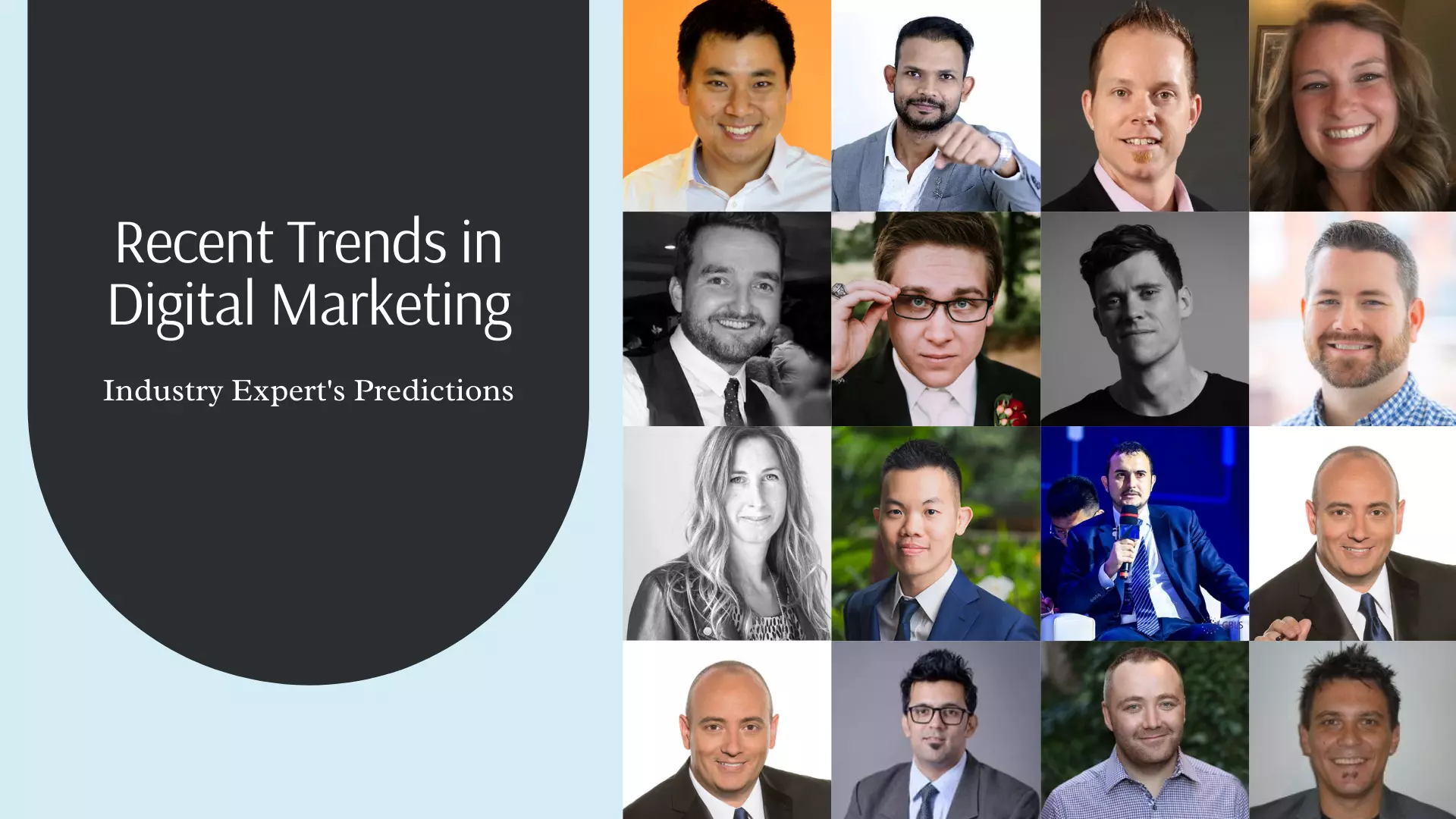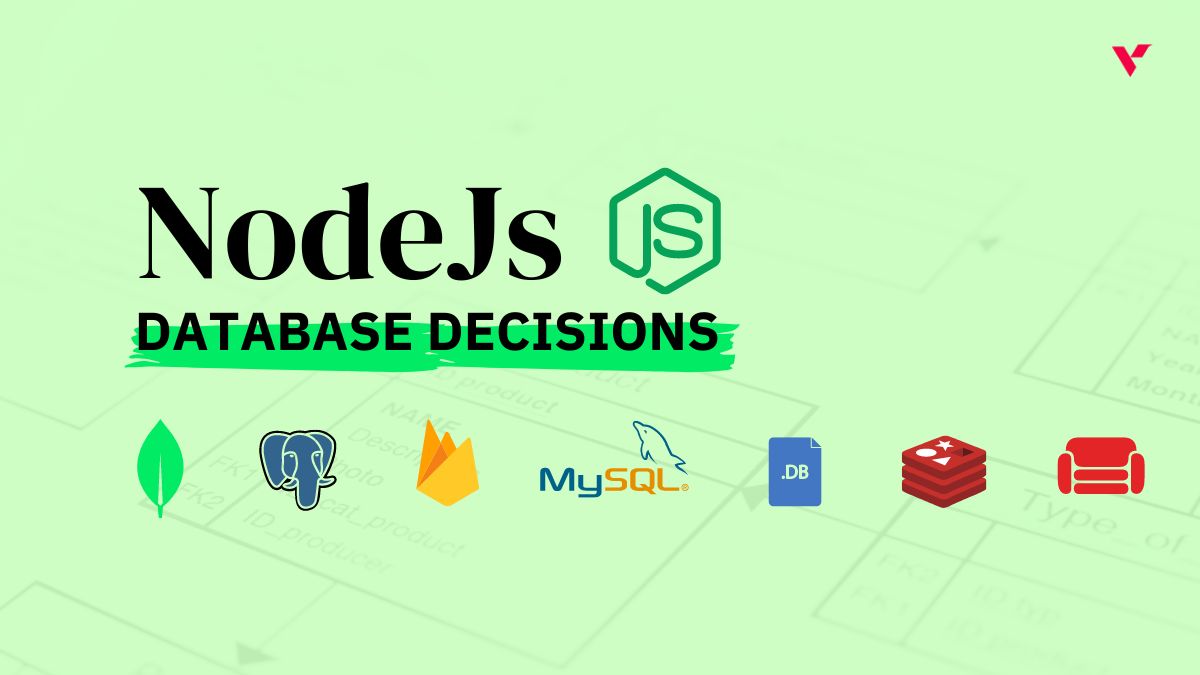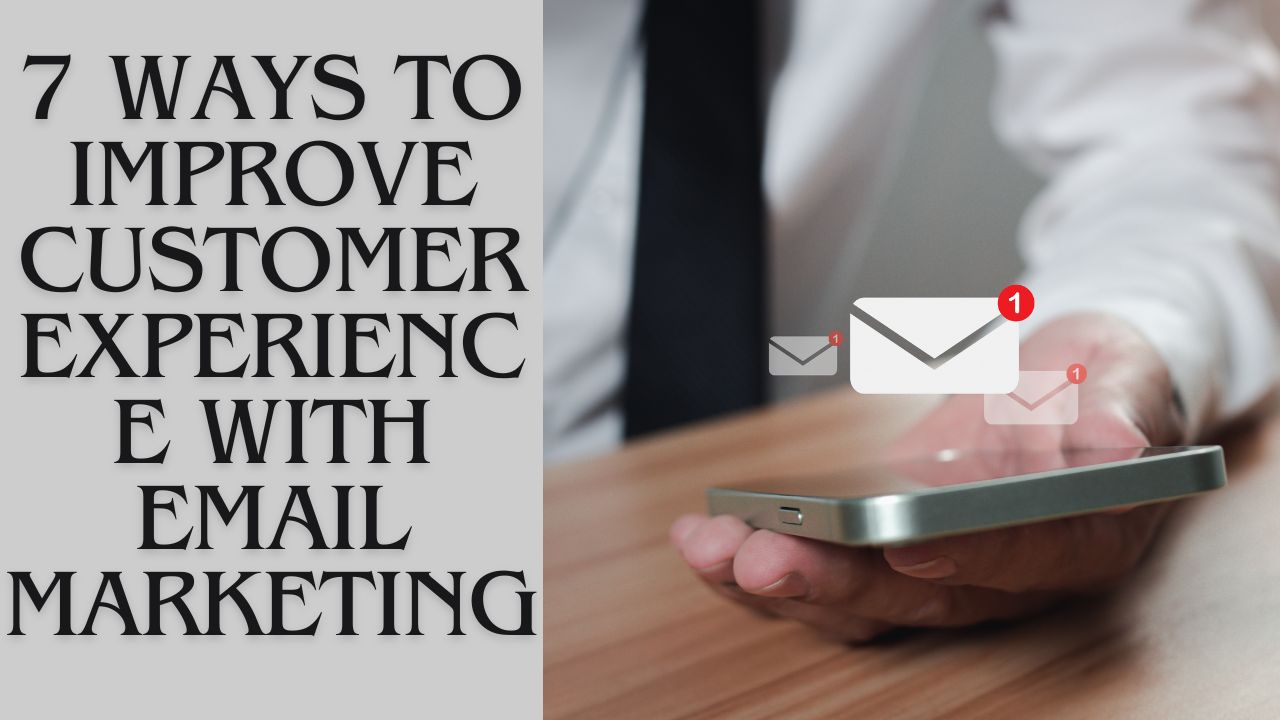Popular Tools by VOCSO
With the rapid growth in online retail, friction amongst businesses has also become high. The best marketers are continuously hunting for emerging digital marketing trends, technologies, and channels so that they can quickly spot exciting prospects for facilitating their sales and reaching their marketing goals.
Several companies are hiring digital media firms because they are experienced and familiar with prevailing campaign tactics and recent trends in digital marketing. However, there has been a transition toward online marketing tactics, and the shift has been rapid.
In the last few years, digital marketing has become more popular and highly effective. These days, digital marketing is less about launching a new campaign and more about being present in your audience’s everyday life – with content that reaches them on all their devices, at every stage of the buying cycle. Therefore, we must stay ever-updated with these marketing dynamics to obtain the maximum benefit potential for our customers. As a professional digital marketing agency for a decade, here, we’ve analyzed the top digital marketing trends for future strategies that advertisers can pay attention to.
Table of Contents
Recent Trends in Digital Marketing
#1. Artificial Intelligence
The supremacy of Artificial intelligence (AI) is at the forefront of global enterprise and industry. It is the most significant commercial prospect for businesses, economies, and nations in the future of digital marketing, with technology expected to boost global GDP by up to 14% between now and 2030. This clearly indicates that AI latecomers will find themselves in severe competitive trouble in the upcoming years.
In Digital marketing predictions, analysts expected AI technology to be prevalent with all types of virtual software devices and services. To help companies understand how consumers find their goods and services, AI can study consumer behaviour and browsing habits, as well as use information from social media sites and blog posts. Again, chatbots (more on that later) are an excellent concept of AI in action that employs natural language processing software to interpret what the consumer wants and answer as if it were a real person – to automate monetary transaction processing. Artificial intelligence will soon be the driving force of all business activities such as-
- Communication at the most basic level
- Suggestions for products
- Personalization of emails
- Transactions on the internet
- Generation of content
Businesses leveraging AI technologies will reduce labour expenses and increase growth, attaining a competitive advantage. You’ll even start to see AI support technology, such as AI personal assistants, be used more often for this very purpose.
#2. Programmatic Advertising
It’s transforming the digital advertising landscape so quickly that 86.2 percent of digital marketing campaigns in the United States will be programmatic by 2024. One of the best digital marketing trends, programmatic advertising, refers to the use of artificial intelligence (AI) to streamline ad buying to target the most qualified audiences. For example, real-time bidding is a sort of programmatic ad buying.
Most manual search-driven advertising campaigns (including those using professional tools) consider three or four factors: the keyword, the time of day, and the location. This automation is far more efficient and quick, resulting in more conversions and cheaper client acquisition expenses. When combined with consumer data platforms, solutions like programmatic demand-side platforms may employ hundreds of targeting signals to personalize advertisements and even target based on lifestyle or behaviour habits.
#3. Chatbots
This year, chatbots will remain a significant aspect of digital marketing. This AI-based solution employs instant messaging to speak with your customers or site visitors in real-time, day or night.
While talking about the future of digital marketing, chatbots will power 95 percent of customer support by 2025, according to surveys. The top benefits of chatbots include 24-hour service (64 percent), rapid replies to enquiries (55 percent), and answers to simple queries (55 percent) (55 percent). These virtual assistants provide excellent customer service by anticipating clients’ needs and automating routine chores, allowing you to focus on more essential activities. Many customers enjoy engaging with chatbots since they are available 24 hours a day, respond quickly, retain their whole purchase history precisely, and never lose patience.
Chatbots allow businesses to converse with their consumers to improve client relationships and increase revenues. When it comes to consumer items, businesses have found the convenience and effectiveness of chatbots.
#4. Conversational Marketing
As we prepare for the future, it will be more vital than ever for businesses to be accessible across a variety of channels and to ensure that they are communicating in the manner that customers prefer.
People want it that way, therefore businesses are catering to them. When customers have a query, 82 percent expect an answer “right away.” In current online marketing trends, conversational marketing allows marketers and customers to communicate one-on-one in real-time. Unlike traditional marketing methods, this type of marketing is now available across many channels, allowing firms to reach customers on their terms: on the devices, platforms, and timeframes that are most convenient for them.
Finally, the major purpose of conversational marketing is to improve the user experience by using a feedback-driven paradigm that encourages increased engagement and loyalty.
#5. Personalization
Among all top digital marketing trends, personalization has become crucial to give highly personalized and seamless experiences to their consumers. AI can also process enormous volumes of data using deep learning and machine vision. This distinguishes an app from the competition. After discussing app development, testing, promotion, and monetization, personalization is one of the most effective strategies to ensure that your users enjoy their time with your app.
Customers nowadays want companies to appreciate their partnership and to provide unwavering support in order for them to have a positive experience. As per the recent trends in digital marketing, customers want relevant, targeted, and highly tailored solutions, and these expectations are only rising. This is where AI meets app personalization. Apps with AI integration will boost app performance. Most app developers now consider AI to be an essential component of app development.
Consider the following statistics on personalization:
- Consumers are enraged by the generic advertising blitz, with 63% expressing their displeasure.
- A whopping 80% of people think they are more inclined to conduct business with a firm that provides individualized experiences.
- Personalization appeals to 90% of respondents.
- Batch-and-blast emails are 3x better than personalized, triggered emails depending on behaviour.
Netflix and Amazon, with their personalized recommended items or movie titles, are impossible to ignore when looking for instances of the power of personalization. Personalize your marketing if you want to stand out – the good strategies include tailored content, high-quality products, personalized emails, and more.
#6. Video Marketing
By far the most popular way for buyers to learn about new items is through video. You may produce a video post or start a live broadcast on Facebook, Instagram, or LinkedIn to increase interaction with your video marketing. Video marketing is one of the most significant digital marketing trends, if not the most essential, and will continue to be so for the next 5-10 years.
This year, these figures demonstrate the necessity of including video in your digital marketing approach.
- 70% of customers say they’ve shared a brand’s video on social media.
- Video has enhanced the conversion rate of 72 percent of firms.
- Consumers agree that seeing product videos gives them more confidence when making online purchases (52%).
- After seeing a video, 65 percent of executives go to the marketer’s website, and 39 percent phone a vendor.
Want to read more insights about video marketing? Read our one of the most read blogs on video marketing tips with experts insights.
The rising move to mobile devices has been one of the difficulties that marketers have encountered in recent years. Digital marketing predictions say, video, on the other hand, may deliver the same information in a manner that works on any device. Long-form sales websites and emails are quickly becoming obsolete due to their inability to be read on small mobile devices.
One of the finest aspects of video marketing is the ease with which you may rearrange your material. Let’s pretend you’ve made a video for your YouTube channel. Instead of simply uploading it to YouTube, you could:
- So that you have a written version of the video, get it transcribed.
- To improve your search engine rankings, post the transcription on your blog with an embedded YouTube video.
- Upload the raw video to Facebook with the transcription as subtitles (native Facebook videos get a much higher impression share and engagement than shared YouTube videos).
- With a quick rewrite and the addition of important metrics and photos, turn the transcription into a separate blog entry.
- Make a podcast episode out of the audio alone.
- Increase open rates by 19 percent by including video thumbnails in your email marketing campaigns and using the term “video” in subject lines.
In recent trends in digital marketing, here are a few more video marketing concepts that are gaining popularity:
- Many organizations utilize live video for interviews, product demonstrations, and behind-the-scenes insights of the brand, such as life in the office, how items are created, company events, and so on.
- Instead of making phone calls or sending emails, businesses and marketers generate tailored video communications. This is simpler than ever before, thanks to the falling cost of film equipment and the rising availability of high-quality smartphone cameras.
- Because YouTube and other videos appear in the SERPs, video optimization — such as adding text overlays and closed captions in addition to your description, title, and file names – is becoming increasingly crucial. To understand more about YouTube SEO, see this tutorial. 360-degree video material is becoming increasingly popular as a more engaging experience.
When compared to text, video on your site is 50X more likely (50 times!) to boost organic search results. What is the reason behind this? Google boosts websites with videos higher in the results because users find video material more appealing.
#7. Influencer Marketing
Influencer marketing is one of the word-of-mouth Digital marketing trends that focuses on utilizing influential people to spread your business message to a wider audience. Influencers can be well-known celebrities, but they’re more likely to be Instagram or YouTube personalities with a large specialized following who can help promote your brand or product through their social media platforms.
Because influencer marketing is more genuine than traditional advertising:
- Consumers believe influencers’ evaluations of items significantly more than what businesses say about themselves, according to 63 percent of respondents.
- In the last six months, 58 percent of customers have purchased a new product as a result of an influencer’s suggestion.
With each passing year, artificial intelligence (AI) makes the process of identifying the ideal influencers to collaborate with easier and faster. It’s assisting in the identification of people who have more engagement, fewer bogus followers, and a better possibility of creating a favourable return on investment (ROI). Artificial intelligence is also changing the way influencer marketing is done in the following ways:
- With ANN, you can recognize images (Artificial Neural Networks)
- Using NLP to assess influencer performance (Natural Language Processing)
- ANN for incentive prediction
- Identifying an influencer’s power
- Posts that do not meet the disclosure requirements are flagged
- Spambots and phoney engagements are being eliminated
According to Digital marketing predictions, influencer marketing ad expenditure might surpass $10 billion by next year. Artificial intelligence will have an impact on influencer marketing as well.
#8. Social Messaging Apps
Take a look at these factors if you think social messaging applications are only meant for sending funny jokes to your friends:
- Facebook Messenger has 1.3 billion monthly active users.
- Every month, 10 billion messages are transmitted between people and companies via Facebook Messenger, which has 1.6 billion active users and sends 55 billion messages every day.
- WhatsApp, Facebook Messenger, and Instagram, the top three social messaging applications, have more users combined than Facebook or YouTube.
#9. Visual Search
In digital marketing trends, leveraging visual search is a popular tactic. Add high-quality photos tagged with descriptive keywords to your online inventory, implement an image search, and consider advertising on Pinterest if your target demographic utilises it. Advertisers that work with them benefit from improved search results.
Users may now upload an image and acquire information on an object merely by looking at it, rather than entering a description into Google. When they upload a plant photo, the search returns species information, however, when they submit a landmark photo, the search returns historical data.
When a user searches for a product, it offers a list of comparable items with links to where they may be purchased. Google Lens, Pinterest Lens, and other similar search capabilities transform a user’s camera into a search bar. Take into account the following:
- Search engines will be more likely to locate your photographs if you have an image sitemap.
- Before submitting photographs to your website, give them descriptive filenames and add alternative text (also known as “alt tags”) to all of them.
People may submit a picture to perform a search and obtain more particular results using a visual search, which may elevate the user experience to a whole new level.
A) Pinterest Lens
Pinterest, predictably, has joined the visual search bandwagon. They released Lens, a visual search engine that allows users to snap a photo of an item and find out where to buy it online, search for comparable things, and explore pinboards of related objects by taking a photo of it.
In digital marketing industry trends, it is one of the effective tactics. Pinterest Lens converts your phone’s camera into a search bar. Since the beta version’s introduction, Pinterest’s Lens has identified 2.5 billion home and fashion objects, inspiring over 600 million searches on Pinterest’s mobile applications and browser extensions, with a 140 percent increase in searches since launch day.
Pinterest has worked to improve its features:
- Pincodes are a QR code-like technology that allows you to get inspiration while out shopping or going through your favorite publications.
- Lens Your Look was created to remove the uncertainty of outfit planning.
- They collaborated with firms such as Samsung to provide visual search to its newest devices and Target to allow users to search their catalogue using relevant goods they see in real life.
- They’ve completely automated Shop the Look, a function that allows users to buy things from firms that collaborate with Pinterest, so you can buy a pair of jeans you see in a photo, for example.
- They unveiled a slew of new tools to aid businesses in selling their wares, including Catalogs, which allows anybody to upload and turn their entire product catalogue into shoppable Pins.
To keep up with the latest digital marketing trends, make sure you’re optimizing for visual search, since Beauty, Products, Home Decor, Travel, Food, Outfits, Fashion, Art, Animals, Vehicles, and many more are among the top search categories for Lens.
B) Google Lens
When you take a snapshot of the following things, you can perform the following:
- Find out where you can get comparable items and where you can buy them.
- There is a type of barcode that is used to identify Use a barcode to learn more about a product, such as where to purchase it.
- Make contact with the phone number or address.
- Read reviews and get a summary.
- Add the event to your calendar using the event flyer or poster.
- See historical details, hours of operation, and more about a landmark or structure.
- Read about the artist and discover more about the painting at a museum.
- Learn about the species and breeds of plants and animals.
When it comes to real-time augmented reality, Google Lens is becoming what Google Glass was never. It is certainly the future of digital marketing.
C) CamFind
CamFind is another visual search mobile software that lets you search for anything by taking a photo with your phone. Rather than entering questions into a search engine, you may use photos to locate comparable pictures, pricing comparisons, and local shopping results, among other things. CamFind will also display you movie information, trailers, showtimes, and nearby theatres if you take a photo of a movie poster.
D) Bing Visual Search
You may also use Bing Visual Search to search for a specific element inside a picture without having to jump through all the hoops that are currently in place.
Let’s imagine you’re seeking kitchen decorating ideas and come across an image that catches your eye. To get the “Detail View,” click on a thumbnail result. The whole design is lovely, but you’re particularly drawn to that lovely chandelier. Wouldn’t it be great if you knew where you could obtain one like it? You can now use Bing Visual Search.
According to Social Media and Digital marketing predictions, visual search skills will be more appealing to Millennials than any other new technology. On Google, images are retrieved for 19% of search inquiries, while Pinterest receives over 600 million visual searches every month. Marketers may get a competitive advantage in this year by capitalizing on the visual search trend to attract customers and provide them with the ideal product.
#10. Micro-Moments
The customer experience will be more dynamic and unpredictable in the current year and beyond since it will need to adjust to quick changes in consumer preferences. People have gotten accustomed to rapid satisfaction in the mobile age. When people think or talk about something, they want to learn more about it, see more of it, and buy more of it with a few taps. This is where the concept of micro-moment comes- one of the popular recent trends in digital marketing.
“An intent-rich instant when a person goes to a gadget to act on a need – to know, go, do, or buy,” defines a micro-moment. Within these four Micro-Moments, people usually make snap judgments. Because of the rising popularity of micro-moments, marketers must reconsider the linear marketing funnel, which follows a predetermined path: awareness, consideration, and conclusion. In order to capitalize on micro-moments, you must be there where customers are looking for information at the time.
In order to get the most out of micro-moments this year, you need to do the following:
- Recognize your customers’ “I want to purchase” moments.
- Be available in times of need.
- Make it simple for them to make a purchase by providing relevant material.
- Every important moment should be recorded.
Our expectations are strong and our patience is weak when we act on our immediate demands. As a result, marketing’s quality, relevance, and utility are more crucial than ever.
#11. Voice Search & Smart Speakers
Through audio content, voice search plays a vital role in presenting all the necessary information that consumers are looking for. Because of the growing popularity of voice search, businesses will need to reconsider their digital marketing strategy. AI is improving, and the amount of mistakes made by voice assistants such as Alexa, Siri, and Google has decreased dramatically. People intend to use voice search for more things in the future.
As per the Digital marketing predictions:
- By 2025, voice will account for half of all searches.
- By 2022, 55% of all American households will have a smart speaker.
- Voice-activated speakers are utilized as a part of 72 percent of people’s everyday routines, according to the survey.
- In 2022, voice shopping is expected to grow to $40 billion, up from $2 billion currently.
A voice search strategy is about more than simply being relevant; it’s about establishing a unique and optimized customer experience that will create connections and increase brand loyalty. More firms will try to tap into this potential in the coming years, experimenting with innovative ways to leverage smart speakers as a lucrative sales channel.
#12. Social Media Stories
Among all digital marketing trends, Social media stories have become a simple and effective way to showcase products, feature events, and even demonstrate behind-the-scenes activities in the most creative manner. The concept of “My Story” was first launched by Snapchat, followed by Instagram and Facebook stories, and finally, YouTube’s own story format: Reels. Because these sorts of stories are only available for a limited time, this is a fantastic chance for marketers to capitalize on FOMO (fear of missing out).
The following are some of the advantages of using social media stories:
- Increased brand recognition
- Cost-effectiveness Constant involvement with followers
- Increased traffic to your website Possibility of reaching out to a younger audience
Take a look at some of these creative ways to leverage social media stories:
- Incorporate polls into your Instagram Stories.
- Include links in your social media posts.
- Use Snapchat’s geofilters to your advantage.
- Add references of other businesses and your fans to your location tags.
- When developing Stories, consider using live video.
- With explicit call-to-actions, encourage your audience to learn more.
It is the medium’s thrilling, transitory aspect that makes it so compelling. If consumers do not want to lose out on exceptional chances or information, they must remain on top of following their favourite profiles. Followers will be hooked on your updates if you give a behind-the-scenes view, a discount coupon, or a limited-edition product through Stories – as long as you deliver.
#13. Browser Push Notifications
Browser push notifications are something you’ll see more and more businesses implementing as part of their effort to engage people across many channels – and they’re growing more sophisticated and tailored. Last year, 85 percent of online shops used push notifications, which is on the rise and it is going to sway the future of digital marketing.
The GDPR (General Data Protection Regulations) changes and stronger filters have harmed email marketing’s effectiveness. Furthermore, when it comes to connecting with companies, the younger generation prefers different forms of communication and prefers to deal with fewer touchpoints. Take a look at the following figures:
- When compared to a newsletter, online push alerts attract at least twice as many subscribers.
- Only 10% of the top email marketers can equal the success of web push in terms of newsletter sign-ups.
- The average time it takes for a receiver to open a newsletter is 6.4 hours.
- When using a web push, the receiver will receive the message right away.
Using tailored push alerts actually boosts conversions:
- Compared to a 3% open rate for general, broadcast messages, segmented push messaging has a 7 percent open rate (a 2x growth)
- A segmented push notification converts 54 percent of users, compared to only 15% for broadcast messaging (a 3x growth)
Notifications prompted by behaviour are being used to re-engage customers who have expressed interest but have not converted, as well as to recoup income from abandoned shopping carts. To increase conversion rates from such initiatives, notifications might even contain pictures and CTAs.
#14. Content Marketing Continues to Dominate SEO
It’s more crucial to ensure a site has quick speed, relevant links, and well-written content than blindly chasing the current Top digital marketing trends. Google made several significant changes to its search algorithm in November 2019. The new BERT system was one of the upgrades, and it’s aimed to help Google understand the natural language that individuals use in their search searches. In fact, 88 percent of B2B content marketers feel that providing content helps their audience see their company as a reputable and trustworthy resource.
The evaluation says-
- Content marketing is 62 percent less expensive than outbound marketing and creates three times the number of leads.
- Compared to sponsored search, content marketing provides lower upfront expenses and longer-term rewards.
- Ad blockers are currently installed on 615 million devices, which means fewer people are seeing your adverts.
- Small companies who have blogs generate 126% more leads than those that don’t.
- Conversion rates for content marketing are 6 times greater than for other strategies.
Despite all of the advancements, content marketing is a dependable and strong approach among all Digital marketing trends to attract new clients to your website and create connections with them in real, quantifiable ways that provide long-term value to your company. Many major firms will continue to engage extensively in content marketing as Google continues to prioritize well-researched, regularly updated pieces.
The following are some of the most effective ways of content marketing for achieving these objectives:
- Posts on your blog to provide corporate news and industry information.
- New service pages that help you target keywords while also giving you a better understanding of your company.
- To arouse interest, use videos and images.
- Email newsletters to maintain consumer engagement and keep them up to date.
- Case studies to show proof of your achievement.
The secret to content marketing success is a combination of elements. Knowing and exploiting the keywords you want to rank for, creating content for every level of your sales funnel from newcomers to loyal customers, and increasing engagement to creating brand ambassadors that share your content is the most important in the landscape of digital marketing trends.
#15. SEO A/B Split Testing
Testing and analysis are at the heart of Top digital marketing trends. You can detach the variables in your campaign and easily recognize which factors are driving the results you need by using A/B split-testing. This type of testing allows marketers to take a scientific approach to create effective content modifications. A/B split testing for SEO extracts the most SEO essence from your site while also providing insight into the factors that move the needle. Even a small budget can deliver a great ROI with this strategy and the right tools.
Pages with latent SEO potential, such as those with a high impression count but a low click-through rate (CTR), are suggested by platforms like ClickFlow, which you can then optimize to boost traffic, leads, and, of course, conversions. ClickFlow allows you to specify a goal CTR value, after which it generates pages and a keyword report that identifies the keywords for which your page is now ranking. Even better, it provides useful new keywords for you to pursue in order to increase traffic.
#16. Social Commerce & Shoppable Posts
With e-commerce and social media both increasing at alarming rates, it’s no surprise that businesses are combining the two to increase sales. Digital marketing predictions say customers will be less likely to abort a purchase if they have to switch applications or sign in to an unfamiliar store, according to e-commerce companies.
Digital marketing relies heavily on social media, and visual platforms like Instagram are gold for marketers. Even better, visual commerce is gaining traction as more people are willing to buy products based on ads they see in their social media feeds. Instagram Checkout, which allows users to complete purchases from within Instagram, was launched in March of last year. According to Instagram, the platform has 1 billion users, 90% of whom follow active shopping brands, with many of them visiting these profiles on a regular basis.
Interactive advertising that allows visitors to click and shop with ease can be created and posted by e-commerce firms. Instagram believes that this will make it simpler for businesses to reach out to potential new customers by shortening the sales funnel and providing consumers with the rapid access they crave.
#17. Interactive Content
When we talk about rapid access to the digital marketing trends, we’re talking about interactive content, which has become one of the most popular digital marketing trends in recent years. We’ll witness a move from standard text-based material to dynamic, engaging material that provides consumers with an immersive experience. Consider the following:
- Quizzes and polls
- Calculators with embedded software
- Advertisements that use augmented reality
- Videos in 360 degrees
If you still need persuasion, remember that 91% of shoppers are actively looking for more interactive material. People appreciate it because it helps them feel more connected to businesses and more active in the purchasing process, not just because it’s new and different. Interactive content is more engaging, memorable, and likely to produce the outcomes your company requires.
#18. Omnichannel Marketing
In recent trends in digital marketing, the omnichannel marketing approach is as ripe and relevant as it has ever been. The process of marketing across several platforms (such as social media, apps, email, and a blog) in order to engage with prospects on more touchpoints is known as omnichannel marketing. This strategy allows companies to engage with customers across additional digital touchpoints, resulting in a better user experience.
Brands must convey a seamless, consistent voice and message across all accessible platforms, including physical shops, social media channels, online, in catalogues, and anyplace else you can think of to stay ahead of the competition. When done correctly, omnichannel marketing may provide a better user experience and a consistent brand message that motivates customers to take action, marking a milestone in the future of digital marketing.
For the best outcomes, all channels should be integrated into a single, all-encompassing approach. According to statistics, businesses who use three or more channels in their automated workflow may get fantastic results:
- Multichannel engagement rate is 18.96% compared to the 5.4 percent for single-channel engagement.
- Omnichannel purchase frequency is 250 percent greater than single-channel purchase frequency.
- Omnichannel orders have a 13 percent higher average order value than single-channel orders.
- Customer retention rates for omnichannel are 90 percent greater than for single-channel.
To implement an efficient omnichannel strategy, you must first understand your ideal customer’s purchase experience. Users want to be able to visit a real shop, look at things on social media, and make purchases online. And if you don’t meet their demands, you’ll lose the business to someone else.
Managing an omnichannel strategy is easier among all top digital marketing trends and despite the fact that it’s still a difficulty, thanks to more sophisticated SaaS businesses giving them tools to handle numerous channels more efficiently. Another area where AI and big data play a role is in helping companies better understand customer behaviour and customize at scale on an individual level.
#19. Augmented Reality (AR) & Immersive Technologies
As per the Digital marketing predictions, 70% of businesses will be experimenting with immersive technologies by 2022, and 25% will have used them in production. While virtual reality (VR) makes a lot of noise and gets everyone excited with huge sci-fi concepts, augmented reality (AR) is considerably more marketable.
According to experts, AR will continue to outperform VR in terms of market share. This technology is rapidly being used by brands to improve the customer experience and increase revenue. We will see a significant increase in brands discovering beneficial applications for AR in the future as the technology improves.
#20. Predictive & Augmented Analytics
We will see a lot more of this in terms of digital marketing trends since it is being utilized in sophisticated lead scoring, segmentation, and individual personalization, all of which help marketers minimize churn and boost customer loyalty. Machine learning and Natural Language Processing (NLP) are used in augmented analytics to streamline data preparation and facilitate data sharing. Predictive analytics is the activity of identifying trends and attempting to forecast the future using data mining, predictive modelling, and machine learning. In several sectors, it is getting increasingly complex and prevalent.
Where predictive analytics utilizes machine learning to anticipate what will occur, augmented analytics employs artificial intelligence to complement human intelligence with the reason, allowing us to work quicker and smarter on ever-larger datasets. Digital marketing predictions say over 40% of data science jobs will be automated, allowing for better and more customized decision-making and hence higher productivity based on the massive volumes of big data that firms are gathering.
#21. Growth of Geo-Fencing
While the concept of marketing to individuals based on their location isn’t new, we predict a growth in the use of geofencing, which is expected to reach $2.4 billion by 2023, as well as an increase in mobile usage. Geo-fencing allows users to be targeted in real-time based on their location. When a user reaches or departs a target region, such as within a mile of a restaurant, they receive a push notification, text message, or another kind of marketing contact.
According to Digital marketing trends research, 54 percent of consumers who open a push notification convert from segmented push to broadcast messages, compared to only 15% for broadcast messages. In addition, 52% of users have enabled push messaging in their applications. Geo-fencing will become increasingly crucial in the marketing strategy of sectors that seek to convert Internet users into brick-and-mortar consumers.
#22. Progressive Web Apps (PWAs)
Progressive Web Applications are websites that also function as mobile apps. They provide the same features as native mobile apps, such as rapid load times, push notifications, running offline, and leveraging device hardware, without being tied to a single platform (which in reality means Android or iOS). This enables development teams to construct web apps that function similarly to mobile applications on any device.
The number of smartphone users is predicted to increase to 6.87 billion by 2024. Mobile is more important than ever in your digital strategy, with total page views on mobile rising by over 50% year over year globally. As the mobile revolution continues to accelerate, PWAs will become increasingly common in the future of digital marketing.
#23. User-Generated Content (UGC)
For marketers looking to reach the Millennial and Gen Z populations, user-generated content (UGC) is a valuable resource. By providing an incentive, such as a discount, or perhaps collaborating with them for a good cause, you may encourage your audience to share unique content.
As more people learn about your brand and its products and services, a simple UGC approach may quickly enhance brand engagement and conversion rates. User-generated content (UGC) can range from simple blog comments and testimonials to blog entries, photos, and videos contributed by users.
In fact, according to one poll of recent trends in digital marketing, UGC affected buyers’ purchasing decisions more than any other type of advertising, with a staggering 97 percent of 18-29-year-olds claiming it had the “greatest impact.”
#24. Blockchain Technology
In its most basic form, a blockchain is a time-stamped collection of immutable data records managed by a group of computers that are not owned by a single company. In top digital marketing trends, cryptographic techniques are used to protect and link each of these blocks of data (i.e. block) (i.e. chain).
However, the following blockchain trends will emerge in current and beyond:
- Keeping track of media purchases and managing social impressions
- Authenticating Online Personas
- Transparency should be increased
- Pinpoint Targeting to Protect Personal Data
- Provenance and Authentication
Blockchain’s applications are considerably broader than simply the financial realm; this technology is also creating waves in the area of digital marketing. Blockchain eliminates the need for a digital marketing intermediary, fosters trust via transparency, promotes public accountability, and provides branding benefits.
#25. Quantum Computing
In recent trends in digital marketing, Quantum computing is a revolutionary technology and it is based on the quantum physics concept that subatomic particles may exist in several states at the same time.
Data is stored in traditional computers in bits, which can be one of two states: one or zero. Quantum computers, on the other hand, employ a new unit of measurement called a qubit (meaning “quantum bit”), which dramatically boosts a system’s processing capability. While a traditional computer would read each book in a library sequentially, a quantum computer would read all of the books at the same time. Quantum computers may possibly do millions of calculations at the same time.
So, how may quantum computing be used by marketers?
Here’s what we can look forward to:
- Mobile data coverage has improved (a boon for mobile marketers)
- Artificial intelligence is growing more human-like (Google AI is developing quantum algorithms that will drastically improve machine learning)
- Ad relevance has improved (quantum annealing can help advertisements reach a wider range of people at a better cost)
#26. Big Data and Deep Learning
The global big data sector will continue to develop dramatically in the future of digital marketing, which is wonderful news for marketers that understand how to use big data effectively. A large portion of this process is determined by the tools you utilize, which is something that many businesses find difficult.
With the advantages of big data comes the need for businesses to better exploit this data in order to greatly simplify processes that were previously only possible for data scientists to execute. According to Forbes, 78 percent of companies have or are building a consumer data platform to help them manage, analyze, and monetize their data.
It should come as no surprise that data professionals are at the top of many companies’ priority lists, with 41% of business owners stating that it is currently their most sought expertise to employ. More significantly, this continuing democratization will lead to new use cases that are more in line with the demands of business customers, allowing AI solutions in the workplace to reach the market faster.
The GDPR amendments paved the way for a worldwide data privacy revolution, with California’s California Consumer Privacy Act (CCPA) slated to take effect on January 1, 2020. One caveat is that, as big data gets more powerful, the expectations on how businesses manage customer data become riskier. As a result, big data is a two-edged sword that many digital marketers will find difficult to avoid in the near future.
#27. Automation (& AI)
As per the Digital marketing predictions, In 2023, 30 percent of companies will use artificial intelligence (AI) in their sales operations. To be honest, we should have expected more, especially given the incredible benefits of AI and automation in sales and marketing:
Artificial intelligence and automation, for example, may be used to: Improve Customer Retention and Loyalty
- With Propensity, you can predict your customer’s behaviour
- Predictive analytics and modelling
- Improve User Experience with AI-Powered Chatbots
- Boost Search Ads with the Power of Audience Insights
- AI-Generated Content Can Help You Scale Up Your Content Marketing
- Provide each user with a highly personalized website experience and optimize for voice search queries
- Recognize “Hot Leads”
- Reduce the number of abandoned shopping carts
- Customers Can Be Targeted Through a Variety of Channels
- Increase the Customer Lifetime Value of your customers (CLV)
- Customers can be upsold and cross-sold to.
- Boost your blogger outreach
- Thank You Pages for Generating Leads
- Provide Visitors with Content Suggestions Automatically
- Bottlenecks in your sales pipeline should be identified.
- How to Evaluate the Success of Your Marketing Campaigns
- Keep a central hub for all of your marketing efforts.
- Save money and time by cutting costs.
Marketing will become more level, and you won’t have an option but to employ automation.
#28. Google Ads Smart Bidding
Paid advertising has become one of the top digital marketing trends, as heated competition on social media slowly suffocates organic reach. When you examine Google Ads’ Smart Bidding function, you’d be a fool not to give it a shot.
Machine learning algorithms learn from large amounts of data to help you make more accurate predictions across your account about how different bid amounts affect conversions and conversion value. In other words, advertisers may take over control of their pay-per-click (PPC) campaigns to Google’s AI system, which will optimize their budget to maximize return on investment.
This works for a variety of PPC objectives, including:
CPA Target
Generate new leads and customers at a predetermined maximum cost per acquisition.
ROAS Target
Set your eyes on earning the highest return on your advertising investments by focusing on ROAS.
Maximize Conversions
Whether your goal is to increase email subscribers, downloads, or product sales, increase your advertising conversion rates.
Smart bidding helps you to optimize your bids using a variety of signals, including:
- The dynamic position of the device
- Intention for a certain location
- Day of the week and time of day
- List of remarketing companies
- Features of the advertisement
- Browser Operating System Interface Language
Some of these signals may be adjusted manually, while others (and combinations of signals) can only be accessed using Smart Bidding. Bottom line: With Smart Bidding in charge, marketers will have more time to concentrate on strategy, copywriting, and analytics.
#29. SERP Position Zero
Voice search has been making waves over the past several years, altering the way search engine optimization works. The emergence of the highlighted snippet, which appears in the highly desired “position zero” of Google’s search engine results pages, is particularly noteworthy. The Digital marketing predictions say that by 2023, at least 30% of all Internet searches will be completed without the use of a screen, and since 40.7 percent of all voice search responses originate from a featured snippet, you may be the one to land that coveted slot if your marketing is powerful enough.
This is the holy grail of modern-day SEO since it immediately answers user search queries without the need for the user to click a link. It’s also known as rank zero snippet or position zero. Voice search engine optimization (VSEO) can provide you with a significant competitive edge. This trend is accelerating, with “zero-click search” results currently appearing in 62.5 percent of mobile searches and 34.4 percent of desktop searches. These are the most popular terms in search queries with highlighted snippets, according to Ahrefs.
As a result, more marketers will devote resources to On-SERP SEO, which is the technique of optimizing web pages in order to claim as much space as possible on Google’s search results pages. This raises the probability of earning the top place by increasing your click-through rate (CTR) and delivering more organic traffic to your site.
#30. Branding
We live in an era where customers have an abundance of options. It’s rare that you work in a vacuum, no matter what industry you’re in. When people trust a brand, 66% say they feel linked to it, and the only way to win their trust is to build a strong brand. Google’s E.A.T. ranking factor-
Expertise:
The page should feature high-quality material created by a professional writer.
Authority:
The site should have some authority on the issue.
Trustworthiness:
Additional authoritative connections pointing to the site from reputable sources are required.
In other words, Google wants to do more than just rank good material; they want the most accurate, up-to-date, well-researched (i.e. authoritative) material on any particular topic, ideally authored by actual experts in the subject.
Google may crack down on big businesses as the new year develops and SEO advances, notably in health and finance, where the correct information is crucial. Marketers should concentrate on establishing their expertise, with guest articles on industry-leading websites, presenting at conferences, and applying for awards among the options. To create brand awareness and gain readers’ confidence, always provide an updated author bio at the bottom of all your published content articles. This is one of the important digital marketing trends.
How to build an effective and measurable brand
#31. Better Analytics
As far as the recent trends in digital marketing are concerned, the work of analytics tracking is quickly becoming a vast endeavour, with various channels to maintain and a plethora of ways to sell your products and services. Better Analytics and stats are inextricably linked, so if you don’t pay attention to better analytics, you’ll struggle to get the desired outcomes.
Before making a purchase, the average customer connects with a brand on up to six touchpoints. The goal of business intelligence is to help people make better decisions. As a result, many businesses are searching for a complete business intelligence solution or analytics dashboard that goes beyond the fundamentals of Google Analytics.
A business intelligence (BI) solution provides a central location where you can connect all of your data and make better-informed choices, allowing you to optimize for long-term value rather than short-term profit. Another way this trend will manifest is through the use of business intelligence, which refers to the technology, applications, and procedures used to gather, integrate, analyze, and display company data.
Google Data Studio (Google’s reporting solution for sophisticated users who want to go beyond the data and dashboards of Google Analytics), Metabase, and Tableau are just a few of the premium and free business intelligence solutions.
#32. 5G Technology
The coming of 5G may also lure millions of remote customers into the high-speed data lanes, where marketers are increasingly selling their wares. The emergence of 5G technology, or the fifth generation of mobile technology, is perhaps one of the most crucial digital marketing trends in a world obsessed with mobility.
5G will bring in a completely mobile and connected world, unleashing human and technical potential while also boosting commercial and financial opportunities. This upgrade ushers in a new era of digital communications, with ramifications that will be seen in almost every business. It might potentially destabilize Google and Facebook’s digital duopoly by providing telecom firms with unparalleled data for ad services.
The expanding augmented reality business requires 5G speed, and it might be crucial in the development of a virtual heads-up display. From digital advertisers to the regular user, 5G technology will change how we consume internet material.
#33. Privacy Marketing
It’s evident that individuals (but not firms) are taking privacy seriously, and marketers who rely on those individuals have little option but to follow the new standards or risk losing out. Marketers and companies will have to earn the contact information of their targets rather than participate in mass marketing, according to one of the new guidelines and digital marketing trends.
People want to know that they can put their faith in businesses and that their personal information is secure. Instead of being complacent, digital marketing teams should be proactive in reinforcing their commitment to privacy in order to gain potential clients’ trust.
Consumers’ trust may be earned in a variety of ways, including:
- Investigating and comprehending our target market (s)
- Creating a meaningful message to captivate a target audience
- Identifying the best medium for interacting with that specific audience
- Through attentive involvement, you may develop an “intimate” relationship
The world’s fifth-largest economy is pressing ahead with its new consumer privacy laws. Marketers in the United States have gotten so sloppy in their targeting tactics that each of us must set aside several minutes each day to eliminate the dozens of emails that are neither relevant nor welcome from our inboxes – both professional and personal.
#34. Website Security
We must address website security as one of the top digital marketing trends. When a visitor comes to your site for the first time, they will form an opinion about its security in a matter of seconds. They won’t stay if they don’t feel protected, which leads to higher bounce rates. A high bounce rate is bad news for your business over time, since it will cause you to drop in the SERPs when Google recognizes that visitors don’t want to stay on your site for long.
According to TechRepublic, there have been over 3,800 data breaches within corporations in only one year! While large-scale intrusions like Yahoo, Facebook, Equifax, and Marriott make the news, there are lots of smaller-scale breaches as well. As a result, just 25% of customers trust that most organizations appropriately manage their sensitive personal data.
Website security will no longer be an option. Google declared that HTTPS is a ranking indication and that any site that does not have an HTTPS (the “S” stands for “secure”) certificate is flagged as insecure. The very minimum, for now, is to enable the HTTPS protocol for your site, which will display a little green padlock icon in the URL to your visitors.
Furthermore, publicly displaying a security mark of trust or a trust emblem on your website can convince your website visitors that you are concerned about their safety.
#35. IoT Advertising
These days, it’s assumed that linked gadgets and technology will collect data on our critical processes in an easy, and occasionally stealthy, manner. The Internet of Things (IoT) is becoming more linked, from smart automobiles to household appliances to wearable technology. Brands and marketers want to utilize (or have already begun to utilize) this data for their own marketing and advertising. As 5G technology improves, more IoT devices will provide consumers with more on-demand entertainment and marketers with more advertising options making a way to the future of digital marketing.
#36. Long-Form Content
Compressed postings (300words content) will not get you anywhere, either with Google or with your readership. The most popular pieces are those that are at least 3,000 words lengthy and provide readers with an in-depth look at a topic. Long-form content helps content writers to position themselves as subject experts and provides them with additional opportunities to target keywords.
Long-form content receives 77% more backlinks than short pieces, which is crucial for organic traffic. When bloggers spend more than six hours on a single blog article, they get a greater return on their investment. That may sound exorbitant, but it’s a wonderful business investment when it brings in more visitors, increases on-page time, and improves your organic search ranks.
According to the digital marketing predictions, the following are some of the advantages of long-form or pillar content:
- The more time spent on your site’s pages, the better. Users will spend more time-consuming material if there is more of it accessible.
- Users will not return to Google to discover another source if they discover what they’re looking for on your website.
- There are a lot of backlinks and social media shares. Pillar pages are widely and frequently shared, particularly among influencers in a certain sector.
- Increases traffic to your blog or website over time. Because pillar material is evergreen, its value does not dwindle with time.
- Increased exposure on SERPs will be aided by the high word count, shares, and backlinks.
These enormous posts are frequently referred to as 10X content or pillar content, and they simply provide a comprehensive solution to every query a user would have on a certain topic. It was created with the goal of providing value to the reader while also ranking well in search engines.
#37. Semantic Keyword Research
When you’re writing long-form articles, keep in mind that you’re writing for humans, not for Google. Consider how Google evaluates your material. The search engine evaluates the substance of a query and digs down to identify the user’s search intent, rather than only evaluating keywords in a search box. In digital marketing trends, this type of analysis is known as semantic search, and with the growth of AI and voice search, it’s becoming a more important part of how search works.
Content marketers may take advantage of this by including related words, queries, and phrases in their content in addition to their core keyword. These latent semantic keywords, when combined, will provide Google with a far greater understanding of the nature of your material, as well as the solutions and advantages it provides to consumers.
According to a B2B survey released in 2019, 90% of the world’s most effective marketers prioritize their audience’s demands over promotional goals. This year, firms with this approach will be at the top.
#38. Structured Data SEO
With over half of all worldwide Internet traffic now occurring on mobile devices, the battle for these rich results is heating up, thus we can expect a lot of marketers to focus on structured data.
Structured data has grown more essential and common in search engine results than other digital marketing trends. Any data that is organized in a way that makes it easy for search engines to crawl and categorize is classified as structured data. This may be done via backend code or by neatly arranging information in tables with designated columns and rows.
Structured data provides a significant SEO boost when done correctly, since you may rank in the coveted Position Zero in one form or another, such as a Knowledge Graph Box that shows critical information about your company. Another advantage of structured data is the ability to provide Rich Snippet results, which include photos, review statistics, and price. Rich snippets, also known as rich cards, are great for getting people to click, especially on mobile.
Schema.org is a set of semantic tags that allow website owners to embed structured data on their pages so that search engines can comprehend, interpret, and portray the material in response to a search query. Although the list is still increasing, here are the content-only schema.org types that Google is currently using.
#39. Alternate Search Engines
According to the research on digital marketing trends, Google accounts for over 92 percent of all search engine traffic. The world’s most popular search engine is a complex innovation juggernaut, perfectly adjusted to give the most relevant, up-to-date, and thorough results for each user search query. It’s difficult to imagine a catastrophic collapse occurring anytime soon, making it appear impossible for any other search engine to compete with Google.
Finally, marketers should think about their target demographic and where their brand’s material is most likely to be viewed. With this in mind, make sure your content is optimized for many search engines.
#40. Voice Marketing Funnels
There’s no way your conventional funnel can keep up with these quickly evolving digital marketing trends. Because many consumers now perform much of their own research online, leads might enter the new voice marketing funnel at various phases of the customer journey. The linear funnel will become obsolete around this year. That transformation is, in fact, already beginning.
This revised paradigm necessitates treating each consumer as an individual rather than a generic prospect. As a result, the funnel will need to accommodate the need for bespoke solutions. Another way the sales funnel is being revolutionized is the shift from the funnel to the engine, in which the brand no longer controls the buyer’s journey but rather “synergistically interacts” with the consumer.
The basic conclusion is that we can and should anticipate technology to continue to evolve, therefore marketers must create funnels that can adapt to ongoing changes in the digital ecosystem. According to Search Engine Journal, the first businesses to adapt to the needs of voice search will enjoy the largest benefits, with their digital internet income jumping by 30% or more.
#41. Facebook May Be Peaking. Really
We’ll see businesses relying more on video and interactive content on social media to attract attention, but they’ll need to back it up by being honest on their platforms and working hard to cultivate a community of engaged, dedicated followers. Here are some social media trends to watch, according to recent trends in digital marketing-
- Facebook Pay: This payment option, which debuted in the United States in November 2019, will facilitate on-platform payments, in-stream, making it easier for customers to buy things on Facebook, Instagram, WhatsApp, and Messenger.
- Facebook Watch: It is the social media giant’s own video-on-demand service.
- Oculus: Virtual reality technology that makes social media more engaging, dubbed “the next generation of social” by Facebook.
- Likes on Instagram are being removed: Instagram is concentrating on better humanizing its brand in response to rising awareness of the negative impact on mental health.
- Instagram’s long-form video platform, IGTV, isn’t new, but it’ll likely get a boost in the upcoming years.
- Twitter’s mDAU: It is a new monthly and daily active user measure termed “monetizable daily active users,” which is part of the company’s effort to rid its platform of bots.
- Narrowcast tweets: An option to restrict the audience and usage of your tweets, including the ability to eliminate the retweet feature from selected tweets and limit your tweet reach to only certain topic conversations and/or specified friends and enables you to target certain audiences with your tweets.
- Groups on LinkedIn: Groups on Facebook are similar. Although it isn’t a brand-new feature, LinkedIn may try to promote it again next year.
- Video on LinkedIn: Because LinkedIn users are 20 times more likely to share a video than any other sort of post, the company is focusing on enhancing its video discovery tools and emphasizing posted video content.
- Snapchat: It might be working on an Augmented Reality version of its Spectacles, which will “overlay digital visuals over people’s real-world perspective.”
We feel that humanizing your brand will be crucial if your company wants to remain in the competitive social media ecosystem.
#42. Neuromarketing
It’s one of the year’s most exciting digital marketing developments. Neuromarketing is a method of determining which forms of information a person finds interesting by analyzing measures of their brain activity and nervous system.
While this may seem like something out of a science fiction film, the fact is that this technology is rapidly evolving and might soon become a legitimate marketing tool. It entails creating marketing materials (such as your website, adverts, email campaigns, and content) that elicit certain neurological processes that elicit emotions or behaviours related to purchasing. You may utilize this data to improve the success of your marketing by optimizing your content and adjusting your methods.
To improve advertising and entertainment, neuro analytics measures emotion and attentiveness. It analyses attention and emotion levels using biometrics, neurometrics, and complicated algorithms, successfully assisting advertisers in determining what information to focus on and what to avoid. Neuromarketing will have a significant influence on the future of digital marketing. The brain holds the most valuable consumer data, therefore any technology that helps businesses comprehend the minds of their potential consumers is bound to be worth its weight in gold.
#43. Local SEO
Google’s local SEO algorithm is updated often, so if you’re a local business owner, you should keep your company’s presence in local results ever-updated as well. As per the Top digital marketing trends, Local SEO is, in some ways, (even more) potent than wide SEO since customers searching for a certain sort of company in their geographic region have a higher intent to buy, making the conversion simpler.
To begin, you must have your Google account registered. You may accomplish this by registering for Google My Business and claiming or establishing a new listing. This improves your Google SERP ranking and offers you the opportunity to provide extra information about your firm to internet searchers.
Google My Business registration is easier than it appears. Furthermore, you should make local keywords a big part of your SEO approach. Obviously, the name of your city or town should be your top keyword, but you may go the extra mile by including related keywords as well. Mention a notable landmark or a unique claim to fame if your town has one.
#44. Automated & Smart Bidding in Google Ads
Many digital marketing initiatives will be automated in the future. Marketers invest a lot of time and money manually tweaking their keywords and bids when conducting a Google Ads campaign. In addition to being time-intensive, there may be a lot of conjecture that might harm your campaign.
Google Ads automated bidding eliminates the guesswork and allows businesses to reach their objectives more quickly. Google analyses all of the information and changes the bids as needed to optimize the effectiveness of your ads.
Even though automated bidding isn’t new, Google has made significant improvements in the last year, making it a must-have for marketing trends this year. Marketers may relax and focus their valuable effort on improving other parts of their marketing mix.
#45. Instagram is a Hit with the Kids
Instagram’s breakneck expansion has already crossed one billion users, a significant milestone. That means it’s one of the fastest-growing social media networks, and, perhaps more crucially, a large portion of its user base is in the desirable younger demographic, particularly those under 30. Due to its image as the social media platform for “old folks,” Facebook is losing a significant portion of this demographic.
Instagram has opted to remove the functionality of the likes from the platform. Many influencers have expressed reservations about the film, so businesses should keep a careful eye on the impact it will have on the future of digital marketing. While this may result in higher content quality, many users may abandon the platform in quest of vanity metrics.
#46. Email is Getting More Personalized
Email remains a popular mode of communication, with billions of people utilizing it for personal, business, industrial, governmental, scientific, and educational settings. To put it another way, email is here to live, and email marketing is still relevant.
Email marketing, on the other hand, is changing, and boilerplate marketing emails are no longer as successful as they once were. Email marketing will be crucial in 2020 due to a mix of automation and, more significantly, personalization.
It may be quite beneficial to tie your email marketing to a specific event, such as a user exploring a certain product, and then follow up with a discounted pricing or demo video in a targeted email. When paired with your remarketing strategies, email is frequently the final trigger to urge action. This brings us to one of the most intriguing opportunities in recent trends in digital marketing.
#47. Online Reviews
Online reviews will assist you in optimizing your client experience and establishing a great online reputation. Customer feedback generates a sense of “social proof” that motivates other visitors to our business to make a purchase. When determining what to buy, most people will use search engines like Google and Bing, or even Facebook. These websites all have their own techniques of indexing and surfacing material, but they all prize original and new information, and customer evaluations may certainly help feed the content engine, keeping your brand in the consideration of algorithms.
In the top digital marketing trends, the importance of reviews in establishing your company’s online persona is one of the most intriguing discoveries of a recent study. A constant stream of favourable evaluations may help your business gain tremendous trust and reputation. Although social media is a useful tool, the ability for consumers to communicate about you on other platforms is an important aspect of your online presence. Online reviews, according to almost two-thirds of shoppers, are an important component of the decision-making process. According to Harvard Business School research, Internet evaluations may have a significant influence on your bottom line. Positively perceived brands sell more, but simply raising your star rating can boost your sales.
It’s crucial to sell your business properly, but having others talk about you is a fantastic approach to amp up your message. Good online reviews inspire positive dialogues about your company, and they may help you enhance your marketing efforts swiftly and simply.
#48. Gamification
Gamification is a new digital marketing trend in which a website combines game elements. This is an oversimplification, but everything that makes gaming interesting, addicting, and entertaining is now being exploited by corporations as a marketing strategy to enhance consumer loyalty, brand exposure, and sales.
Consider gamification in the pre-digital era: with 80% of smartphone users playing mobile games, it’s simple to see how gaming may be a pull in e-commerce as well.
Consider the following examples:
- Spin the wheel to receive a discount ranging from 5% to 75% off.
- If you log in to the site for ten days in a row, you’ll win a reward.
- The website’s scavenger hunt pushes visitors to scan each page and seek new objects; locate everything and earn a prize (a discount, free download, etc.).
- To increase brand recognition, use games in your advertisements.
Gamification’s Advantages:
- Encourage people to take an interest in your products or services.
- Gives comprehensive instructions on how to convert.
- It’s possible to apply it for instructional reasons.
- Improved user engagement.
- Effective for effortless training.
- A fantastic way to get readers to respond to a website.
The primary goal of gamification as a marketing technique is to enhance sales and profits. These customer-focused games have advantages that help businesses get closer to their goals. They assist in gathering client information, improving interaction, enhancing the company’s brand, and encouraging repeat business.
#49. Employee Engagement
If you have a firm with several employees that are passionate, engaged, and enthusiastic about their work, this may be a huge benefit to both your company and your internet image. As per the evaluation of digital marketing trends, employee involvement is a natural and relatable method to grow your social network. Employees who enjoy their employment and the organization they work for are more likely to talk about it. They should also be encouraged to discuss it on social media, tagging or referencing the brand and sharing intriguing experiences.
LinkedIn is a great instance of how this may be done. You may establish a corporate page where you post events and share articles, but have your staff share and comment on these pieces to increase traffic and engagement. Because the LinkedIn algorithm places a premium on personal connections, this spreads the word to more people, signalling to LinkedIn that the individuals behind the post are active and involved with their organization.
Setting targets and paying workers who frequently share your material is another option; this will motivate your staff to share company news with their networks even more. Before naming devoted employees as torchbearers or ambassadors for your company, make sure their personal pages and profiles are up to date and meet business standards. Check to see if they’ve been verified, whether their profiles are complete, and whether their current and previous material aligns with your company’s overall viewpoints.
#50. Page Speed
The number one reason consumers exit a website within a minute of arriving on the page (also known as the bounce rate) is a slow-loading page—even a second or two of latency in how the page loads can have a negative impact on your conversion.
The good news is that you can quickly improve your website load times. To begin, optimize your pictures and eliminate any huge picture files. If there are any, reduce their size to less than 100KB.
Reduce the number of internal redirects, particularly redirect chains that go through many redirects before arriving at the proper URL, as well as internal connections to redirects. Reducing them can improve your Google authority and page load times (both good things).
#51. Webinars
Audiovisual content is an excellent method for grabbing viewers’ interests and keeping them engaged. It allows you to share a large amount of stuff in a short period of time in a quite dynamic way.
Because of these natural features, videos are more relevant to everyone. Most of us would rather watch a brief video than read a lengthy essay or blog post. Because many platforms provide options to produce and share short films like stories and reels, social media is an excellent place to publish video content.
The covid outbreak has also aided the emergence of video marketing as a critical component of any digital strategy. Webinars, for example, have become important in all businesses to replace face-to-face gatherings. According to recent digital marketing trends, video content will not be a fleeting trend, and marketers should incorporate it into their digital marketing mix on a constant basis.
#52. Sustainability: Loud and Proud
People in this year are equally concerned about sustainability as they are about the digital marketing trend of inclusion. They want to make sure that the companies who get their money are just as concerned about the environment as they are.
We’re witnessing a popularity surge for sustainable and eco-friendly products, especially among younger customers, with 81 percent of consumers strongly believing business should assist better the environment, (an emerging component of the future of digital marketing). This isn’t limited to the green goods industry; any company may gain from publicizing its sustainable practices. You may visually express your brand’s environmentalist values without saying anything with the correct digital marketing design.
To make the sustainability aspect of your brand, you must communicate your sustainability via your branding and content. Based on your branding approach, there are a variety of options, such as openly displaying a banner on your site with pride or regularly addressing it on social media. More subtle ways, such as branded reusable tote bags or incorporating green elements into your brand’s visual identity, are also viable options.
Expert Predictions on Current Digital Marketing Trends
We at VOCSO love to keep innovating in digital marketing in order to get our clients the best possible strategy and leverage. We conducted an expert round-up with 44 digital marketing experts and compiled a final list of 19 including myself 🙂
Digital marketing is always going through innovation and one has to constantly keep experimenting and exploring to figure out “what’s fading” and “what’s hot”. We’ve been hearing a lot of noise about various digital marketing trends.
1. Chat marketing will explode
Facebook’s integration of 3 chat platforms — Facebook Messenger, WhatsApp and Instagram — guarantees this.
More people use messaging apps than social networks:
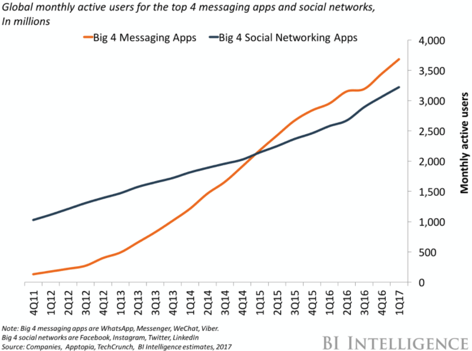
Yet less than 1% of businesses today use technologies to automatically reach customers with messaging.
This month, Facebook announced it was integrating its three messaging apps so that users can message across platforms.
This level of integration has some jaw-dropping consequences, and they’re overwhelmingly awesome for marketers.
Chiefly, the integration makes it easier and more cost effective to reach customer targets around the world and across diverse geographies and demographics, from one chat marketing automation platform like MobileMonkey.
2. Stories & Direct Messages Trend Up As News Feeds Fade
As organic reach on news feeds like Facebook’s has been dwindling, so has the news feed’s viability as a marketing and advertising channel.
Time spent on Facebook is in decline in the US:
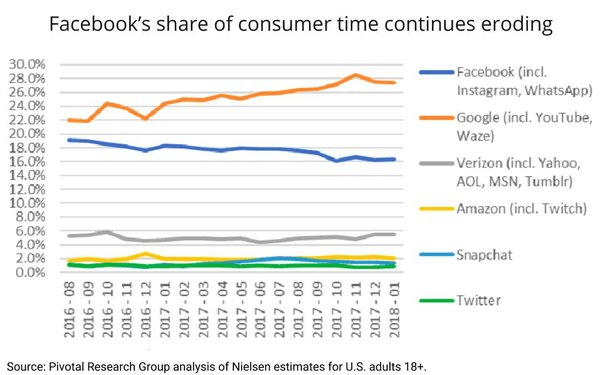
User growth has stalled and ad prices have gone up.
Facebook also removed a ton of audience targeting options for advertisers, and scaled back audience insights.
The future of social media is becoming more about stories (the kind of impermanent post that becomes unavailable after 24 hours) and direct messaging.
1. Harness The Power Of Social Media
Your social network profiles can be an essential asset for bonding with your audience. Since users spend much of their spare time on Instagram and Facebook, they are exposed to all types of content. Why not let your brand be featured there as well?
Other benefits you can get from social media are customer reviews and support. Engage your followers and encourage them to leave comments, participate in contests and share your content. Collaborate with opinion leaders and influencers to boost your popularity.
Each social platform brings additional traffic to your website, so social media management should be taken seriously: track mentions of your brand, reply to both positive and negative reviews and comments, and connect with your customers by sharing stories and showing “behind the scenes” photos.
Use videos for storytelling. A trend toward videos that began in 2018 promises to become even bigger in 2019. Create massive engagement around your business with live videos and stories. Instagram’s IGTV app is going to boost the popularity of vertical videos as well, so keep that in mind when planning your social media campaign.
2. Optimize Your Voice Search To Be Heard
As soon as possible, take steps to improve the voice search feature on your website.
According to WebCeo research, about 10% of all Google searches are made by voice. These metrics are very likely to increase dramatically this year. The forecast from experts predicts that 50% of all searches will be made by voice by the year 2020.
This should not come as a surprise. Mobile search is more about talking than typing. Moreover, smart speakers are already in constant use by one in six Americans.
If you want to be ready for the future of voice search and leave your competitors behind, start optimizing your on-site content right now:
- Go for long-tail question keywords. Foresee your users’ queries and use location words (e.g. near me) and question words (what, where, how, etc.) to maximize your reach.
- Optimize your content to be descriptive and concise to get a high ranking. Your goal is to be featured in snippets and quick answers.
- When creating new content, keep in mind that people speak differently than they type. Adjust your text to this phenomenon by providing the user with more details.
- Increasing your domain authority is always a good way to improve your ranking.
3. Use Chatbots For Customer Engagement
Why should you set up a chatbot on your Facebook business page? The answer is simple – to enhance your marketing funnel and benefit your SEO with extra traffic to your website.
Chatbots are already a common way of communicating with businesses for many users. This year, Artificial Intelligence tools will continue to develop and improve user experience.
The most widespread use of chatbots right now is in customer service and online ordering. Users are happy to have a fast and convenient way of ordering pizza, with the opportunity to interact through both texting and voice.
If you worry that chatbots are not suitable for your business, think again. A mattress company created a chatbot called insomnobot3000 to keep you company when you cannot fall asleep at night. So, use your imagination and win your customers’ love with a smart chatbot app.

#3. Marcus Ho
The Founder of Brew Interactive. He is also the author of the highly raved book, Social Payoff
Branded storytelling is a continuous effort to create attitude and behavioral changes for your brand. Successfully achieving such changes comes down to showing people that you care about them and not your brand. Here are what I believe to be 3 valuable kernels to take along with you while you strengthen your 2019 social media content gameplan.
1. Shortening Attention Spans Are A Myth
Ask Dom Whitehurst, Head of Digital Engagement at Wavemaker who pointed out the great irony that while we spend more time on our phones (than being engaged with our partners, family and friends), our interaction with content is getting reduced. Just because there’s more content to make competition is stiffer, does not mean that we should condense what we want to say. We just need to do it in a better way.
In order to cut through the clutter, we need to tell stories that matter to people, not your brand. We need to share moments that matter to people, not your brand. Lastly, we need to share secrets that matter to people, not your brand.
2. They’re Not Target Segments or Audiences, They’re Called People
Like how structure drives behavior, so do words. When we use a word to name something, we internalise it, understand it, and then respond to it. Take the term ‘target segment’ for example – images of charts and target boards are more likely to pop up in your head rather than an actual person’s face.
We need to start treating our “audiences” as real people – as individuals instead of groups. Personas are crucial to this helping in this process but to go a step further, you’ll need to break it down and identify a specific situation that affects an actual individual in order to make them feel like they matter to your brand. A good way to start is to use the BEM (Behaviours, Emotions and Moments) approach.
3. Familiarise Yourself With Chatbots Already
They’re here for the long haul and are likely to phase out mobile apps 😱. According to Gartner, 50% of enterprise companies will spend more time, money, and effort on developing chatbots than on mobile apps. With that, CUX (an upgrade of UX design) will be of greater significance in the next few years.
This AI-powered workflow will involve an even deeper level of persona development, personalised content and chatbot conversations. This is why you need to get in on the game of chatbots so that you can learn to use them in more powerful ways than one – to show people that they matter, not your brand.

#4. TJ Kelly
Digital Marketing Strategist at 3 Media Web
No one thinks billboards are personalized. Digital marketing has always been more personal—or closer, anyway—than offline media. This trend is accelerating.
The most successful brands are constantly finding ways to connect at the 1-to-1 level: remember that you’re speaking to a person. And make sure that the person knows it.
Think Gary Vee, Tim Ferris, Joe Rogan. Make your content come from YOU: your name, face, and voice (“Jane Doe at ABC Corp,” not “ABC Corporation, Inc”).
1. Personalize With Video
In marketing? Use Instagram, Facebook, and Snapchat Stories to distribute raw, personal, quick videos. Share tips, thoughts, questions, polls, games, jokes, etc.
In sales? Use Wistia or Vidyard to record 30-second intro videos to say hi to prospects. Record from your laptop or cell phone and send. No budget is required.
2. Personalize with Voice (and Voice Search)
The tone of voice matters more than words. Let your audience hear you, not just read you. Audio is on the rise: podcasts and on smart home devices. Amazon Echo’s Flash Briefing allows your audio messages to reach an audience as they go about their routine. Think of it as an audio version of a Facebook/Instagram/Snapchat Story video.
Sci-fi shows like Star Trek had it right: very soon, we’ll all ask our questions verbally and expect immediate audible responses. “Alexa,” “Ok Google,” and “Hey Siri” are the tip of the iceberg. Prepare your written content to be read aloud by smart speakers using natural language.
3. Personalize With Communities
Social media exists because humans are social. Content is still king, but it only gets to reign if it has subjects in its kingdom. Your content will only succeed if it resonates with a group of real humans.
Find—or better yet: build—a community of interested people around human interest topics. Maintain a Facebook group, Slack channel, Reddit sub, or other online hangouts. People coalesce around ideas— but they do it with other people.
Make it about the people.
Stay Ahead Of Privacy/GDPR
It’s only a matter of time before the GDPR comes to the US. Get out in front of the privacy requirements early, or you’ll be left scrambling when it arrives.
Partnerships With Niche Influencers
In 2018, we saw many brands giving money to Instagram “influencers” to pose with or endorse their products. On YouTube, the idea of sponsored mentions of a product has existed for several years. What we will see in 2019 is a continuing blurring of the lines between sponsored content and influencer marketing, but with one distinction.
Long term partnerships with content creators:
bloggers, social media personalities, YouTube channels, and podcasters – will become more of the norm and not an anomaly. These partnerships will have the greatest effect when the product and the content creators are closely aligned in the same subject matter (i.e. software companies partnering with digital agencies, industrial suppliers partnering with home improvement or automotive parts companies).
Membership Communities Will See A Large Resurgence
In 2018, and so far in 2019, we are witnessing a reinvigoration of paid and free membership communities. These can be facilitated through membership software on a self-hosted website, but also through Software as a Service, Slack channels, and Facebook Groups.
It is particularly interesting that while Facebook use among millennials and Gen Z seems to be dropping, the proliferation of Facebook Groups seems to be on the rise.
Having a membership community is an advantageous form of digital marketing for several reasons. One, it fosters a sense of belonging to a group, in which your questions about a given subject can be answered. Two, it positions the group leader(s) as a source of knowledge or experts, even if the bulk of the help is coming from the community inside the group. Three, it makes it easy for the group administrators to pitch follow-up marketing, like webinars or product launches, within a highly focused target audience group.
Live Video
Particularly on YouTube. The ranking algorithm on YouTube seems to favor channels that use YouTube Live regularly. The more often you publish, and the more often you use YouTube Live, the more your channel seems to get pushed. Facebook Live is a very close second to YouTube in total video consumption. Facebook has worked very hard at being a challenger to YouTube, and the live video allows for customer interaction. Periscope is still part of Twitter. And on Twitch, which has traditionally been a platform for live gaming, we are seeing more people starting channels about marketing and other non-gaming subjects.
Deepak Chauhan dictates the rise of influencer marketing and social messaging apps as the top trends in Digital Marketing in 2019
Adaptation Of Social Messaging Apps For Business Messaging And In-messenger Advertisement
We have been using social messaging apps like facebook messenger and whatsapp like an integral communication tool. You won’t be able to indicate a point when these became so immensely integral that it’s almost hard to assume how we’ve been living without these. Let’s take a look at some of the statistics collected from statista and some other sources…
As of January 2019,
- There are over 1.5 billion monthly active users on WhatsApp
- Over 1.3 billion monthly active users on facebook messenger
- More than 1 billion monthly active users on WeChat
As more and more users are mobile and they are using these social messaging apps, it makes more sense for businesses to integrate these into their customer experience life-cycle. Integrating these social messaging widget on the consumer-facing website makes it easy for visitors to reach out to your business and break the ice.
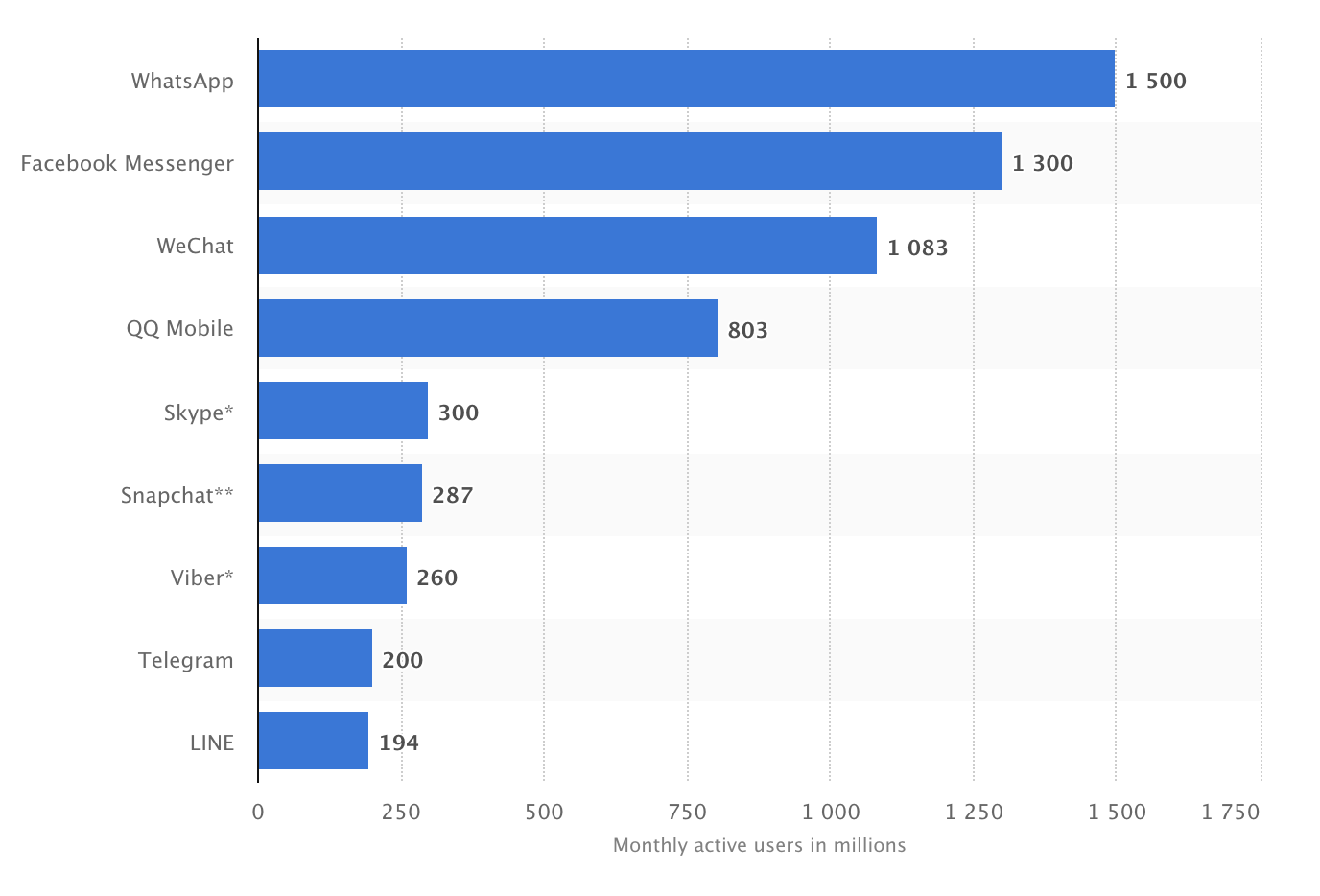
Now, let’s look at the daily messages being sent via WhatsApp in Q4 2017, that’s over 60 billion. Then imagine the number of daily messages being sent across facebook messenger and other social messaging apps.
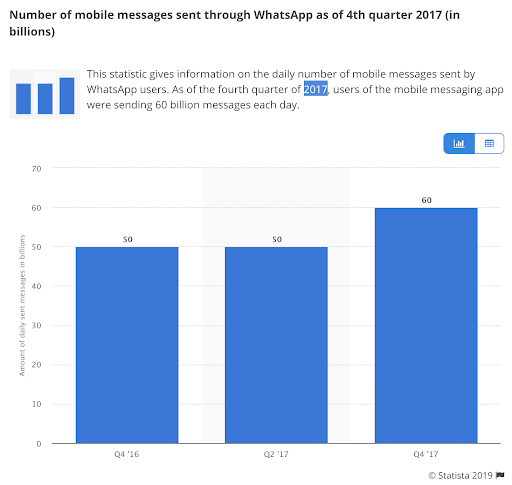
These numbers make an attractive option for businesses for advertising.
Influencer Marketing Gradually Replacing Traditional Celebrity Endorsements
In recent few years, we’ve seen a new tribe growing with the growth of social networks… Influencers. These influencers are normal people with followership in a different niche. We’ve seen that younger audience trust these influencers more compared to the traditional celebrities. Influencer marketing has the ability to transfer the trust gained by influencers to brands. Consumers depend on influencer recommendation across platforms like youtube, Instagram and Facebook to make their buying decisions.
Influencer marketing is becoming a cost-effective way to reach out to the target audience, in some cases delivering ROI of 6x.
Shaifaly Girdharwal, one of the well known influencer in taxation niche receives a lot of requests from those interested in promoting their products/services to the audience.
Samsung recently launched an influencer brand activation program to launch their new phone.
Brands related to lifestyle, fashion, cosmetics, electronics, travel, etc have been actively using influencers to endorse their products. But these is no reason why it should be limited to that.

#7. Blake Puryear
Co-Founder & Head of Product at Engine E-Commerce
VR/AR (XR) Commerce Content Creation Tools Become Widely Available
As we saw in 2018, “tools” are the new tour de force in the digital marketing world. Being enabled through platforms and leveraging tools others have created is the only way most marketers survive. Last year, virtual reality and augmented reality (VR/AR) content made a splash into the market. These tactics rapidly became the “cool” thing brands would use to drop new content out to a wide audience. Whether you’re using a Google Cardboard, an Oculus Rift or the new Oculus Quest, this content is immersive, engaging and can suit almost any brand’s purposes.
Until now, VR/AR content has been locked behind expensive digital agencies and only available to the most cutting edge or deep-pocketed brands. In 2019, we will start to see tons of brands begin to use this technology thanks to new tools that make VR/AR content creation easy. These tools — such as Unity, Adobe’s Project Aero, Byond, and ZapWorks — will change the way digital marketers create AR/VR content. These tools lower the difficulty bar for making XR content and put the power into the hands of smaller brands like never before.
We’re going to see so much more of this stuff in 2019 and, honestly, I’m excited. The time of immersive, virtual content marketing is upon us.
Focusing Marketing And Design On “Real People” Will Become The Norm
For years, many brands have relied on paid actors and highly overproduced model photoshoots to make their products look slick, desirable, and almost other-worldly. However, 2019 is going to be a different place. We’re going to see more brands embrace the idea that real people are using their products and, as a result, real people will be the ones featured in their content.
Check out Glossier, for example, where the homepage prominently features many real users of its products. The brand isn’t displaying products slathered on a model that doesn’t look like the average consumer. LushUSA with its “stories” is another great example. It’s real people with real product stories. This trend will spread across clothing and beauty brands like wildfire as brands find that if they show their product being used by their real shoppers, other potential customers can relate. This will end up creating higher converting campaigns than they’d ever expected.
Is Facebook Ageing Well?
With an increasingly defined demographic, Facebook is becoming the go-to platform to reach the more seasoned social media user, with 41% of users being over the age of 65. After having a difficult 2018 with a data breach that affected 14 million users, Facebook is still currently the #1 social media platform in the United States. With weaponized, political propaganda rife on the platform and younger generation becoming increasingly estranged it is important to be careful that your campaigns are going to reach the audiences you are expecting. If it is the younger generation you are looking for, Instagram could be a better option!
It’s An AI Future
Whether you heed the warnings of Elon Musk or not, AI will be a part of our future, and the application of AI to marketing is set to increase. AI can analyze consumer behavior and search patterns using data from blog posts and social media platforms. Facebook Messenger bots are now widely used that can optimize customer service and save precious time to be conversing and informing customers. It is likely that 25% of customer service will use chatbot technology by 2020. This will be great for accelerating growth and saving costs.
Trust Those Influencers
Influencer marketing uses word-of-mouth from trusted key leaders to drive a brands message. Paying influencers to get your message out there is a much more efficient and effective strategy. Influencers can include celebrities and Instagram or YouTube stars, to well-known bloggers and journalists. For example, Iceland’s collaboration with Channel Mum increased approval ratings from 10% to 80%, which was a 72% increase above the agreed digital KPIs. In this case, switching from celebrities to real people tapped into a dedicated community of micro-influencers.
Video Continues To Grow
By 2019, 80% of global Internet consumption will be video content. Marketers who use video grow revenue 49% faster than non-video users. Although YouTube remains the most popular way to consume video you should also be posting video content on Facebook, Instagram, and your own site. Good video production should capture and convey your brand’s personality.
Content Is Still King
Content marketing is still an essential part of digital marketing. Effective content marketing in 2019 involves producing high-quality content that is tailored toward specific audiences within the target market. Optimizing for SEO and getting more granular with your messages are key!
Voice Search Is On The Rise
Smart device ownership using Alexa, Google and Siri have risen dramatically. People want to search, shop and discover new things by using their voice. By 2020, 30% of all website sessions will be conducted without a screen. You can prepare for this by ensuring your site loads quickly, has improved meta-descriptions and is optimized for speech.
Chatbots Are The Future Of Marketing
Chatbots will continue to be an important part of digital marketing trends in 2019. Many big brands already started using chatbots for their brands and they are seeing tremendous response from the customers. Brands like uber use chatbots making it easier to even hire cars on Facebook messenger.
By 2022, chatbots will help businesses save over $8 billion per annum, especially in the banking and healthcare industries.
Video Marketing Going In 2019 And Beyond
Another crucial factor for digital marketing in 2019 is Video marketing, it’s super important for brands to have a video marketing strategy into their annual plans. 70% of consumers say that they have shared a brand’s video. 72% of businesses say the video has improved their conversion rate, 52% of consumers say that watching product videos makes them more confident in online purchase decisions.
Influencer Marketing
Another one is influencer marketing, which is very targeted for niche product marketing and it is working well for the eCommerce industry. So if your brand has a niche specific product then influencer marketing works like charm. It will be an important part of digital marketing in 2019. You can use these tools for find best facebook ads for your ecom industry.
Blogging Will Be A Crucial Part Of Content/Digital marketing
Last one is blogging, if you are not blogging or sharing your failure or success stories for your business on any blogging platform you are losing potential customers on the way, start using Linkedin, Medium, Quora for your business, share your case studies and failures , people love to know about your brand stories, storytelling is a new way to engage your audience on these amazing blogging platforms 🙂
I want to avoid talking about aspirational trends like machine learning, blockchain, virtual reality and others.
Instead I want to discuss two trends that I believe are more likely to influence the majority of digital marketers in 2019. They are:
1) the rise of content strategy, and
2) contributing to podcasts.
I’ll talk about each of these trends in turn.
No More Aimless Blogging, Let’s Talk about Your Content Strategy!
For many, the notion that content strategy could be a trend is ridiculous.
But consider that only 43% of respondents in the Content Marketing Institute’s 2018 Content Management & Strategy Survey believed they had a documented content strategy.
So there is room for improvement. I believe 2019 will be the year content strategy comes to the fore. We’re all starting to recognise that there’s a glut of content on the web and realising that the easy returns of previous years are not a reality any more.
I expect more marketers will be analysing their content and better aligning their efforts to their business objectives.
Podcasting Is Hot But It’s Tough, Start with Being A Guest
We’re all consuming more and more podcast content each year, but 2019 shapes as a big one.
“I believe 2019 is a time for hockey stick habit growth and diversification of the audience and the offering.”
Courtney William Holt, Head of Global Studios, Spotify
But it’s looking for guest opportunities that I see being a big digital marketing trend in 2019.
Would you commit as much time writing a guest post as you would preparing and recording a podcast? I don’t think so.
That’s not to say that the opportunity is any less either. Contributing to a podcast is great from an SEO perspective (which is often the leading driver of the guest posting obsession). You still get mentions and links from the podcast show’s notes, and we’re going to start seeing podcast content showing in search results in the near future.
“Right now Google is really good at giving you text and video related to your search query. With all the amazing work podcasters are publishing each day, there’s no good reason why audio isn’t a first-class citizen in the same way.”
That quote came from Zach Reneau-Wedeen from Google’s podcast team and it was published by the Search Engine Journal.
The digital marketing landscape has witnessed a dramatic shift in recent years. There is a time when SEO, social media and PPC were the key digital marketing trends. The basic trends will remain the same, but the channel or method of conveying a message will change.
Businesses that move fast continue to generate more leads and gain profits. You can take your company’s profits to the next level by paying attention to the below digital marketing trends.
Voice Search
Voice search is growing significantly and it is likely to dominate other marketing trends in 2019. Based on the demand for voice search stats of 2018, there is enough evidence to analyze where it will reach in the upcoming years. According to sources, 55% of teens and 41% of adults are using voice search daily. By 2020, it is estimated that 60% of browsing sessions happen through voice search of which 45% of consumers use voice search to find local businesses, products, and services.
As smart speakers like – Alexa, Google Home, and Apple HomePod continue to thrive in the technology marketplace, people have gone beyond a period of hesitation and discomfort to give voice-based commands. Voice searches are increasing at a tremendous rate and it is expected that 50% of searches will be made by voice search in 2019.
Chatbots
Chatbots are the best thing to happen to digital marketing in 2019. If you are wondering whether or not your business should create a bot, then you are wrong. With more than 1.5 billion people interacting with chatbots, it is estimated that more than 75% of businesses across the globe are planning to use chatbots in 2019. Chatbots are the programs that automate certain tasks by chatting with users and offer outstanding customer service.
Many customers prefer interacting with these chatbots over other marketing channels because they are highly responsive and give answers in real time. It is estimated that chatbots will save more than $8 billion per year. In a survey, it was found that 27% of consumers expect instant response while 75% expect an immediate response. Hipmunk, NatGeo Genius, Uber, MongoDB, TechCrunch are some of the reputed companies that are successfully using chatbots like the acquire.io to reach their customers.
Videos
Platforms such as Amazon Prime Video, Netflix, YouTube, and Facebook Live have made videos a big trend. The content that we used to watch on TVs is now available on smartphones, tablets, and laptops at the touch of fingertips. Businesses can start taking advantage of this trend to generate leads. It is estimated that 70% of businesses improved their conversion rate through their brand videos.
Live videos are becoming very popular and a large number of businesses are using for product demos, reviews, interviews and many more. A 360-degree video is more likely to hook the customers. As consumers spend more time on their smartphones, advertisers are expected to spend $20 billion on promotional and informative videos in the year 2019.
Live-Streaming Video For Marketing Immediacy
Based on the business customers I work with, many plan to continue using video for marketing, but with more immediacy in how they reach prospects. Live streaming video is one of the hottest digital marketing trends this year, despite not being new.
We all know about streaming services available through Facebook Live and Twitter’s Periscope. How they’re used for marketing, though, is a lot different than just casual use.
When combined with hiring an influencer, you can make live streaming video a powerful new tool in real-time marketing. The best way to make this work is to use the above streaming services at live events related to your business. Or, the influencer can get create real-time content showing how a product is used to help solve a problem.
Capturing prospects in the moment is one of the most critical marketing trends, especially when it’s related to something else with relevancy.
The Evolutionary Growth Of Voice Search
Optimizing toward voice search is another powerful digital marketing trend that’s only just beginning.
It’s going to change how a lot of things work, including SEO. More conversational long tail keywords will need to be created, which may require a whole other branch called SEO Semantics.
Meta descriptions are going to have to be reinvented as well. SEO experts like us will have to read these descriptions out loud so they’re sure to sound conversational enough to suit Google.
Even more challenging will be optimizing toward different voice search products. With Amazon Echo and Google being the two leaders, many more are sure to arrive. It’ll mean having to optimize accordingly for search engines based on how these devices are used by consumers.
Optimizing this for mobile devices will also be a challenge since search engines typically only show a few results at a time for voice searches.
AI Moves Up A Few I.Q. Points
Each year, our business sees artificial intelligence playing a bigger part in digital marketing. AI continues to become smarter, even though we don’t necessarily want it at HAL 9000 level.
Nevertheless, AI is already being used to help make business analytics more thorough. Soon, we’ll be seeing it work in creating images for digital ad placement.
Catering ad imagery to what prospects truly want to see will become a razor-sharp way toward better targeting. AI will soon be doing that as a form of understanding consumer intent.
With the ability to better understand contextual data, AI is becoming almost as smart as any expert marketer you can hire.

#14. Ananya
Independent Marketing Consultant at LazyGeniuses
Trend #1: Changes In Consumer Behavior
This is the data provided by Google for the last two years:
- 150% growth in mobile searches for “near me now”
- 900% growth in mobile searches for “near me today/tonight”
- 200% growth in mobile searches for “near+open+now” (Ex- restaurants near me open now)
What do these numbers tell you?
The future audience is going to be “very impatient” and “very very specific”.
The consumer today is more powerful than any other time, they are very specific about their need and won’t wait long enough to get what they want.
So, next time you are planning SEO for a website or an ad campaign for a brand, make sure that:
- You understand their need, by giving them exactly what they want. (Ex:- If they have searched for “ blue casual check shirt for men” OR “café’s near me with high-speed free internet” give them exactly that)
- You are valuing their time by providing the result at a very high speed.
- And although you might already know this, assume every internet user as mobile users. Be mobile friendly, always.
The Secret To Connecting With The Next Billion Users
Every day thousands of people log in to the internet for the first time, all over the world, and the catch is “Not Everyone Speaks English”
Digital marketing will help you to reach millions of users online, but you are not going to catch their attention while they are busy scrolling their feed or going through an interesting article.
Thus they are not going to stop for your ad, and click on it unless it’s catchy. So, the secret to getting their attention is to get personal, talk to one person at a time, in his/her language about his/her problem.
So remember this while writing your next ad-copy, one of the best ways to connect with your audience is by talking to them in the language they speak.
And this is applicable for the users all over the world, everyone loves a personal touch.
Digital Marketing trends in 2019 will specially focus on improved new age marketing techniques. Following three trends which will significantly occupy the market space in 2019.
Influencer Marketing
It is reported that by 2020 Influencer Marketing will be a $10 billion industry. Furthermore, in the past 22% of 18-34 year-olds have made huge purchases after seeing recommendations of Online Influencers. This indicates that business needs to invest considerably in Influencer Marketing in the year 2019.
To support the case of Influencer Marketing trend lets consider the case study on how Marriot International raised awareness of its hotel properties across the United States. And likewise how SanDisk Europe aimed to appeal to those seeking fast media storage solutions. Both did it with the help of Instagram and Online Influencer, Brendan van Son
.
Inbound Marketing
Inbound Marketing demands lesser efforts and ROI and conversion rates compared to traditional outbound marketing.
HubSpot reports that 42.2% of companies used Inbound Marketing to increase their lead-to-sale conversion rates in the past.
Furthermore, to emphasize the efficacy of inbound marketing, let consider three good examples of leading brands that used inbound marketing strategies to achieve more sales can be cited.
Jackson Coffee Company in Michigan used Email Marketing as an inbound marketing strategy to get customer support. They won over Coffee giants like Starbucks and Dunkin’Donuts.
Likewise, Nike adopts inbound practices such as blogging and publishing content through social media to woo consumers.
Remarkably, Dell also uses blogs, newsletters, videos, and email marketing as inbound marketing strategies to propel their business leads and conversions.
With such big companies harvesting the benefits of inbound marketing, it is high time to incorporate inbound techniques in their digital marketing strategies and Inbound Marketing is one of the top trends to watch in the year 2019.
Voice Search Optimization
The use of voice search has increased with the rise of smartphones. Correspondingly, the tech giant Google is now giving foremost priority to websites that are optimized for voice search with its most happening.mobile-first indexing.
In line with this, several leading brands have started incorporating voice assistance technology in their products to make things more easy for their customers.
On the other hand, this is a clear sign for businesses and marketers to optimize their contents for voice search.
Few stats and use cases mentioned below will emphasize the importance of brands to switch to “voice mode” in 2019 as a means to simplify their technology for their consumers.
Campaign Live reports that 50% of all searches will be voice searches by 2020. Moreover, Gartner reports that 30% of all searches will be done without a screen by 2020.
Technavio also reports that the voice recognition market will be a $601 million industry by 2019.
Further, to illustrate with real-life use cases, Dominos’ Pizza has its own voice-ordering system. The software has thus made ordering more efficient and accurate for customers.
Similarly, British online supermarket Ocado, released its app for Amazon’s Alexa to enable customers to add groceries to their shopping list by voice command.
Interestingly, Whirlpool also has made a collaboration with Amazon’s Alexa to get the home appliances operated by voice control.
To conclude, 2019 will be a transformative year for digital marketing with these trends making significant headlines in the marketing place.
Business Of All Sizes Will Use Outsourcing
Whether you’re a small business or a large corporation, outsourcing can be a veritable lifesaver. If you’ve been chipping away at your business and doing your utmost to keep it afloat, but you still need extra help, you should consider outsourcing.
By outsourcing a particular job or process, you can gain a new perspective and fulfill short term needs. Nobody likes to think that they have a lack of skills. But when you are struggling with an aspect of your business, you will find that you may be lacking strength in one or more areas. Good for you for realizing that! The situation might also be a lack of resources instead of a lack of skill and outsourcing can help with that too.
Done right, outsourcing can save you money. Instead of hiring a full time or part time employee, you can hire someone to do a specific job at a fraction of the cost, and arguably, with better quality.
As our resources are handed over to an external entity, it gives us that third-party perspective. They can see what we’re doing wrong, even if we can’t see it ourselves. It’s always beneficial to have another opinion, but when we’re so insular and used to our own ways, we may not have the advantage of an outsider perspective.
Outsourcing can be an efficient and effective approach to this, whether it’s reinventing your website or it’s handing over the reins to someone who changes significant processes.
The three tasks you should consider outsourcing are:
- Repetitive tasks or tasks that your business continues to do each and every month. These tend to be the same for many businesses, though, such as payroll, general accounting services, data entries, inventory management and everything else you can possibly think of that repeats itself.
- Specialized tasks such as IT services. It may not be necessary to keep an entire team of tech professionals in-house unless your business actually specializes in this field. This is one of those tasks that most small business will choose to outsource as hiring someone or training an existing employee costs a lot of money – and, if you don’t train them properly, you risk paying someone who isn’t competent enough.
- Your weaknesses Again, in order to outsource the areas you’re not as strong in, you will have to assess your startup first. For many business owners, an important area they’re not as strong in as others tend to be social media management. The platforms are new, the tone-of-voice may be a bit different, and they simply have too much on their hands to spend time on understanding and managing a variety of social media platforms.
Trend #1: Chatbot Fails Replace Ill-conceived Hashtags As A Key Source Of Brand Embarassment
The biggest story in automation currently is the use of chatbots, with the technology behind them becoming ever more sophisticated and consumers proving to be surprisingly amenable to this form of customer service – recent research* suggested that almost 70% of consumers actively preferred the instant response and round the clock availability they offer. Alongside that, though, I predict a new trend in spectacular chatbot fails, where configuration errors or inappropriate usage lead to hilarious consequences…
Mindful Use Of Social Media
Social Media has become an embedded part of our lives, but increasingly users are becoming hyper aware of the extent to which social media has become a negative habit, and are taking steps to fight back. Alongside that is a growing awareness of just how resource hungry all that computing power is**. With the growing focus on mindfulness and sustainability, is 2019 the year that spending hours every day on Facebook becomes the social equivalent of driving your child half a mile to school?
A Question Mark Over The Role Of The Influencer
For years, we’ve all suspected that the enthusiasms of social media influencers in many sectors, but particularly fashion and beauty, might have been more than a little influenced themselves by generous “gifts” from brands. The release of revised guidelines around commercial content, in particular by the Advertising Standards Agency and CAP in the UK, has already lead to some surprise disclosures after some “big name” influencers were threatened with action. Instagram captions have become a mile long, as the fashion blogger has to explain their entire gifting and commercial history with the brand behind every item they’re wearing, and users are seeing the full extent of those relationships. How this will impact on the marketing industry is yet to be seen, but it seems likely that the time of exploiting these apparently organic, and certainly invaluable, sources of social proof, might well be over.
Omni Channel Marketing
With growing competition among online businesses, you need to put your feet in multiple digital marketing techniques to be ahead of your competitors. For example, if you plan to invest in Google Ads in 2019 then along with working on Google Adwords, you need to create a landing page that loads swiftly and is optimized with the right set of keywords. Additionally, for better conversion from Google Ads, you need to build a strong organic & social media presence.
Voice Search
With the emergence of assistant devices such as Siri by Apple, and Alexa by Amazon, etc. voice searches have increased significantly. As per the stats, 50% of searches on Google will be voice searches in 2020. So it will really interesting to see how digital marketers will grab this opportunity.
Here are a few quick tips:
- Use long-tail conversational queries on your website content.
- Write concise answers for the conversational queries on your website.
- Use schema or structure data to answer quickly for voice queries.
Digital marketing is constantly evolving and it’s crucial to be aware of new updates. Otherwise, you could lag behind while the competition makes progress. You need to be aware of the trends, regulations, and changes that will affect the digital marketing landscape.
There are three main digital marketing trends you should watch out for. Understanding these trends will help you plan an actionable and effective strategy in 2019.
Smart Chatbots
Smart or speaking chatbots are the future of brand-consumer communication. Chatbots will become more responsive and intelligent as well. They will make businesses more efficient by avoiding repetitive tasks.
They will function as an excellent customer service tool, as they will respond to your customers’ queries easily, quickly, and effectively. Globally, 33% of customers stated that they found chatbots to be very competent at resolving their issues.
So, it’s time that your business leverage smart chatbots.
Voice Search
In North America, every 1 out of 3 Gen Z individuals uses voice search on their mobile devices. The statistics clearly indicate that the usage and popularity of voice search are increasing. So, businesses need to leverage this opportunity and amplify their marketing campaigns.
The use of voice search assistance like Amazon’s Alexa, Windows’ Cortana, Google Assistant, Google Home, and Apple Homepod is also increasing. These interfaces are being regularly updated with new features, making them much easier to use it.
Also, comScore predicted that by 2020, voice searches will be responsible for 50% of internet searches. So, it’s a good time for your business to leverage the power of voice search. With the introduction of voice searches, not many people take the time to type their inquiries. For voice search, you need to use conversational phrases and optimize your content accordingly. It will help you increase your reach and gain new customers.
Artificial Intelligence
Artificial Intelligence is the next big thing in the world of digital marketing. It’s predicted that the global revenue generated by AI is expected to increase to $89.85 billion by 2025 from $7.4 billion in 2018. This data reflects the increasing popularity and usage of AI.
AI-driven solutions will help you automate your marketing strategies, understand the behavior of your customers, and analyze complex data. It will also help you customize relevant marketing communications for your customers and deliver excellent and promising customer service. As of 2018, only 38% of companies are using AI solutions to develop customized marketing communications.
If you are not using AI-based solutions for your digital marketing campaigns yet, then it’s time to get started.
It’s always important to keep a close eye on these new trends and educate your team about them. This will help you carry out a successful digital marketing campaign and stay ahead of your competitors.

#20. Rahul Yadav
Founder of Rahul Consultant
Artificial Intelligence
In AI hardware/machine is able to learn, make decisions based on the processing data and takes action where necessary. Recently Salesforce reported that use of AI among digital marketers will grow more than 50 percent in the next two years for the purpose of better ad targeting. So artificial Intelligence going to play a significant role in consumers lives, brands, marketers etc. Further, AI will become intent advertising, able to recognise what online shopper trying to get and cater customize ads or better user’s experience. Thanks to advancements in the technology.
Influencers Marketing
Influencers marketing start with the influencers. Actually, Influencers are the people like us who have the power to affect, influence the decisions of their audience. Because they tend to be trusted by the general public due to their any skills, creativity, uniqueness, talent. Influencers have a great fan following social media platforms such as youtube, facebook, twitter etc. There are online and social based. The audience sees them as normal people, more similar to themselves than celebrities. They hold a lot go power when it comes to persuading and advising a new and large audience.
Online Consumers sees influencers as genuine, trusted, normal people, to get help while making decisions. Nowadays the general public tends to trust social media influencers over big brands.
In the minds of young consumers, influencers aren’t trying to trick you into buying a product, they’re merely sharing their experiences and recommendations.
E-Commerce Shoppable Posts Will Be Taking Over
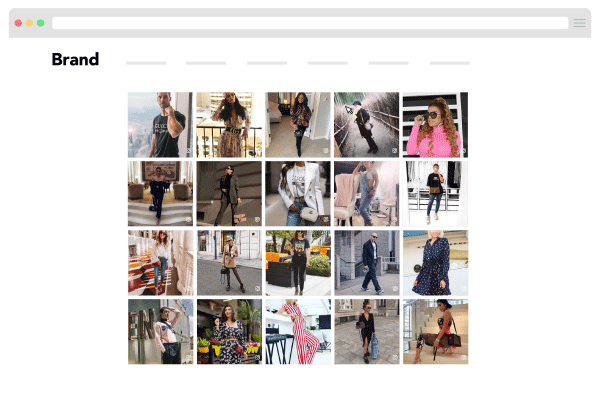
With the emergence of Instagram Shoppable Posts and the recent update of Google Shoppable Ads in image search, take over of the e-commerce industry by shoppable posts is confirmed.
With more than 74% shoppers turning to social media to make their purchase decision, incorporating social content as shoppable posts using instagram aggregator or any other type of social aggregator on your e-commerce website is highly recommended to generate customer trust and grow your online business.
User-Generated Content Is Still Trending
User-Generated Content is the unrivaled king of digital marketing, with 86% of millennials trusting user-generated content as the measure of a brand’s product and service quality, user-generated content is still trending and will continue to do so. Given that, it is the secret arsenal of any successful digital marketing strategy providing social proof and generating social trust among customers.
Final Lines
As you can see, things are evolving quickly in the realm of digital marketing. To stay ahead of your competitors, you must continue looking forward and aim to adopt new technology, ideas, and methods. The younger generations and more tech-savvy customers of today want companies to interact with them in new and creative ways that make the customer experience smoother and more delightful.
The current year will see a shift in digital marketing trends toward automation and customization. The trends seek to provide customers with highly personalized information while also alleviating the stress on marketing efforts, owing to artificial intelligence-powered automation technologies. If you want to immediately use one or more of these top digital marketing trends discussed in this blog, make sure you have a well-thought-out digital marketing strategy in place so you can reap the ultimate benefits of the current trends throughout your client’s lifetime.
As the truth hovers, even with our best efforts, we won’t be able to make accurate Digital marketing predictions for upcoming years. However, customers-centric marketing and content strategies that engage with users should be the centre of brands’ efforts. Digital media has been the prime medium for modern-day marketing and the trend will not die anytime soon, especially in adverse circumstances.
So, all the best for implementing the opportunities from digital marketing trends this year! Comment below and let us know which of these recent trends in digital marketing will you apply first?


